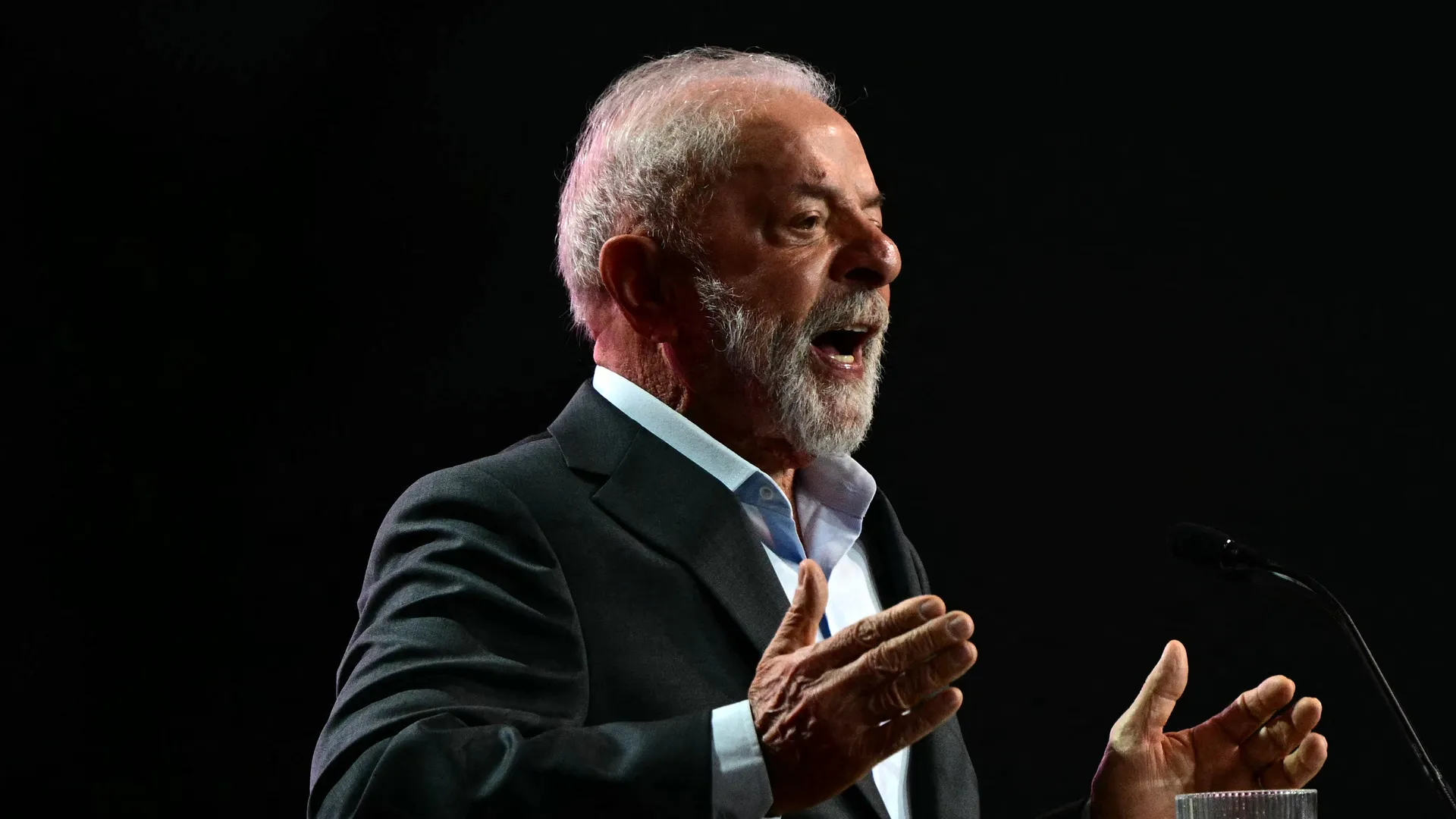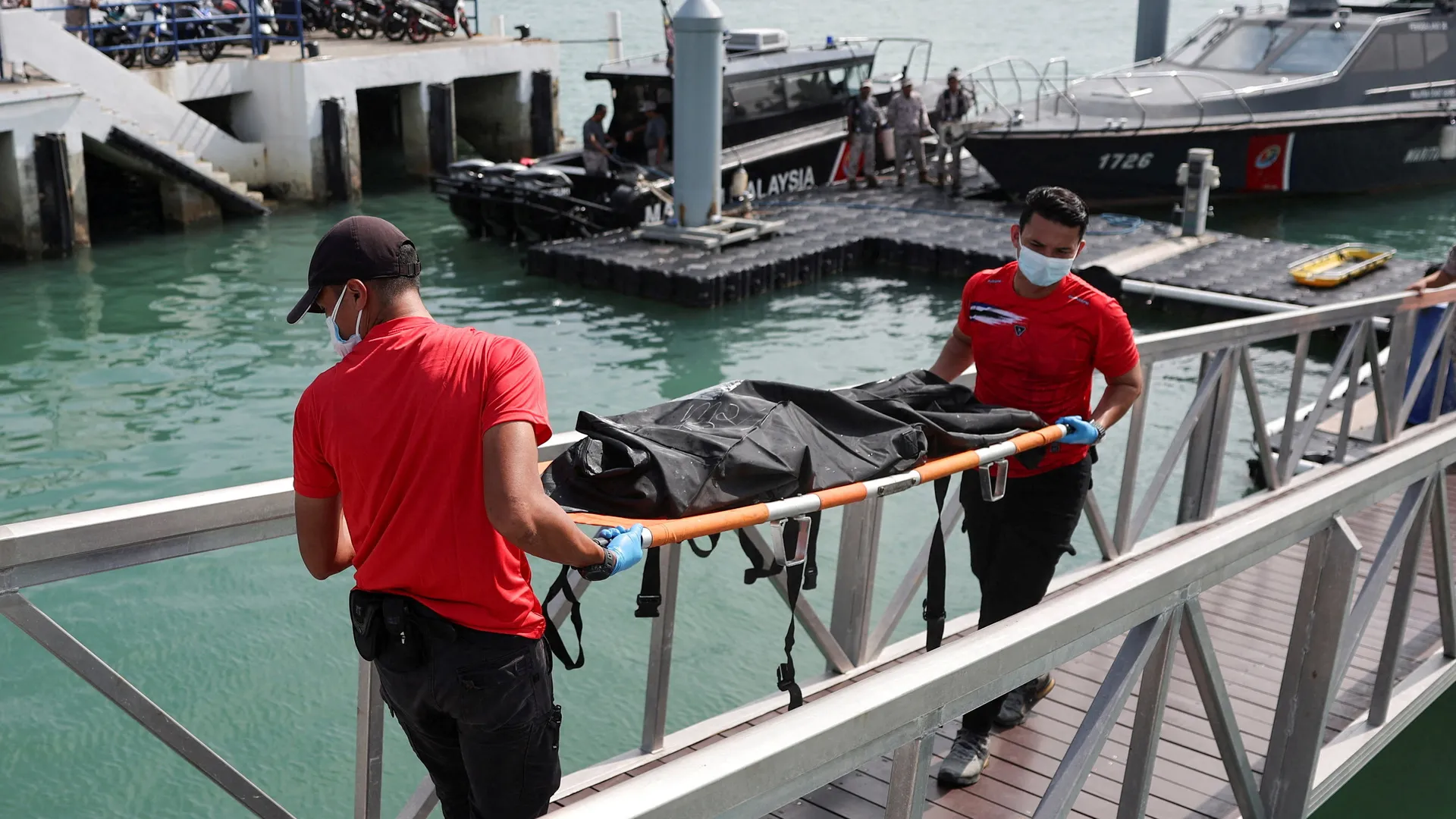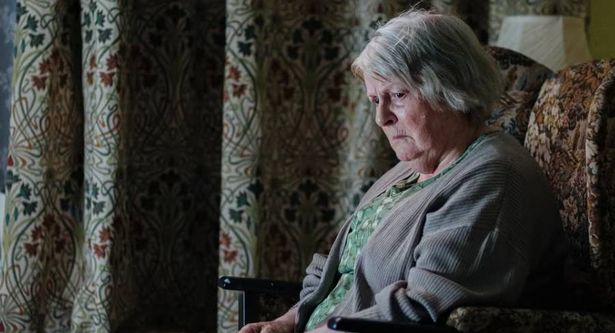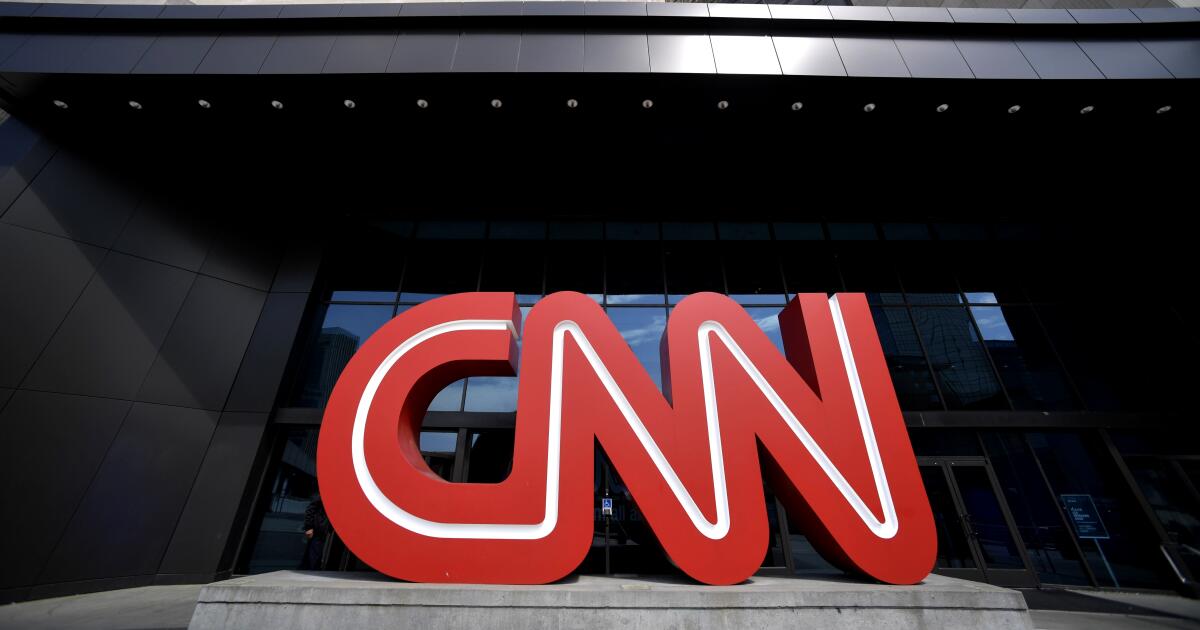
United States Grand Prix 2025 declared ‘heat hazard’ race
For this season, the cooling vests are optional, and some drivers, such as four-time world champion Max Verstappen, do not like them because they consider them uncomfortable and flawed.
Williams driver Alex Albon said it was a “polarising subject”, between “the old-school and new-school mentality”, but that the cooling vest was “a good thing”.
Referencing the Singapore Grand Prix on 5 October, he added: “As a team we’ve done a really good job with the cooling system. It works well on our car, it’s comfortable. The first 20 laps of the race I was actually cold rather than hot, which was definitely a new thing for me.
“In a weird way I think we see it as an advantage as a team because if we’ve got drivers that are fresher at the end of the race then surely that’s performance.”
But Albon said he did not know whether the system would be necessary in Austin this weekend.
“Humidity is always a struggling factor,” Albon said. “Getting your skin to breathe with all the fireproofs that we have on our car and all these kind of things.
“When it’s dry heat, and this doesn’t feel that humid out there at the moment, it’s relatively comfortable for us.”
Mercedes driver George Russell wore the vest when he won in Singapore in hot and humid conditions on 5 October.
If the driver chooses not to wear the vest, his car must carry 500 grams of ballast to compensate for the weight of the system so he does not gain a competitive advantage.
The system, which teams can make to their individual designs, typically features a liquid such as glycol pumped through a tank of dry ice and through the driver’s fireproof top.
Issues with the system include the dry ice running out. This leads to liquid at car temperature, which is hotter than ambient temperature, being pumped through the system.
Canadian leaders threaten legal action if Stellantis commitments fail
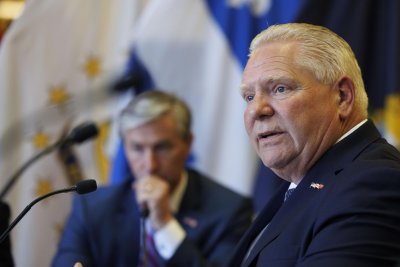
1 of 2 | Premier of Ontario Doug Ford pictured June 25 in Boston, Mass. This week, Ford said he got assurances from Stellantis the company will not permanently shutter its Ontario-based Jeep facility after Stellantis announced a major U.S. investment and plans to reopen old plants in America. Photo Provided by CJ Gunther/EPA
Oct. 16 (UPI) — Ontario’s Premier Doug Ford said he received an assurance from Jeep maker Stellantis’ Canadian chief the company will keep its Canadian plant open for future manufacturing.
Ford said Wednesday that the company’s Brampton auto plant will continue running despite Tuesday’s revelation that Jeep Compass production will shift to an American facility.
“I want to keep the Brampton plant open, no matter what,” Ford said following talks with Stellantis Canada president Jeff Hines. “He’s given me his word, they are going to keep it open.”
Stellantis, the parent company of multiple auto brands including Jeep and Chrysler, announced this week plans to invest billions in the United States to reopen facilities and add roughly 5,000 U.S. jobs plants in Illinois, Ohio, Michigan and Indiana over the next four years.
In April, Stellantis put a hold on production of its new electric SUV at its Canadian plant on Williams Parkway in the wake of tax-like tariffs imposed by U.S. President Donald Trump.
It was set to move forward with production later this year.
“Our government will continue to use every tool we have, including through our $20 million investment in POWER Centers to support displaced workers, including through retraining to re-enter the workforce as quickly as possible,” Ford posted Wednesday on X.
On Tuesday, Ford spoke with Canada’s Stellantis chief who reportedly said the company is “going to postpone it for a year” and claimed Stellantis will “find a new model” to build at the Canadian site.
“They are going to see what products they are going to put in there,” said Ford.
Ford, the leader of Ontario’s Progressive Conservative Party, added plans exist to add a third shift to a Windsor plant to possibly transfer up to 3,000 or less workers.
A Stellantis spokesperson pointed to its 100-year history in Canada and said Britain’s fellow commonwealth nation was “very important” to Jeep’s parent owner.
“We have plans for Brampton and will share them upon further discussions with the Canadian government,” the company stated.
Meanwhile, Canada’s Industry Minister Melanie Joly reminded CEO Antonio Filosa in a letter that Stellantis made critical commitments to Canadians.
“While the current U.S. tariff environment is creating complex challenges, Stellantis has made important commitments to Canada and to its workforce,” Joly wrote.
Joly said if Stellantis chooses not “to respect its obligations,” the Canadian government would “act in the interests of all Canadians and hold the company to full account, and exercise all options, including legal.”
Israel’s relentless bombing of Gaza hinders recovery of captives’ bodies | Hamas
Israel says Hamas is failing to meet commitments under Trump’s Gaza ceasefire plan, while Hamas says Israel’s destruction makes recovering captives’ bodies nearly impossible. With 11,000 Palestinians also still under rubble, Al Jazeera’s Nour Odeh says tensions threaten the fragile truce.
Published On 16 Oct 2025
Vera’s Brenda Blethyn looks completely different in ‘shocking’ film with ‘violent’ twist
Brenda Blethyn stars in the upcoming drama film Dragonfly, which has been described as “shocking” and “violent” by critics
The latest trailer for Brenda Blethyn‘s “shocking” drama Dragonfly has just dropped and it’s already proving a massive hit with audiences after scoring 93% on Rotten Tomatoes.
The film also features Andrea Riseborough and Jason Watkins, with the storyline centring around Coleen (Riseborough) who becomes horrified by the treatment her elderly neighbour Elsie (Blethyn) is enduring, prompting her to volunteer her assistance without charge.
Nevertheless, the synopsis suggests that Colleen’s motives might not be quite what they seem. As suspicions mount, a devastating incident triggers a brutal chain of events that could irreversibly transform both women’s existence.
The trailer opens with Elsie recognising that looking after someone is “a lot of hard work” after Colleen volunteers her assistance. Colleen insists that it’s what neighbours are “supposed to do”, but the trailer swiftly shifts into darker territory as Elsie looks petrified by a telephone ringing in her house, and Colleen’s true intentions come under scrutiny from Elsie’s son (Watkins).
“I’ve been hurting all my life, Elsie, to be honest,” Colleen confesses, as we witness her menacingly observing Elsie through a glass panel in her front door, reports Chronicle Live.
Following its debut at the Tribeca Film Festival earlier this year, Dragonfly currently boasts a 93% score on Rotten Tomatoes. In our critique, we called the film “a powerful and compelling drama that explores those that society shuns, building to an ending you won’t forget”.
The Hollywood Reporter penned: “Is this tonal swerve a little gimmicky? Probably, and the film will not be to everyone’s taste. But it is a skillfully rendered exercise in terror.”
ScreenAnarchy remarked: “While cinema in general still tends to romanticise loneliness, Dragonfly shows it for what it is: a routine series of everyday, excruciating experiences that always build up to something that tends to be horrific, more often than not.”
The Guardian lauded it as “a stark, fierce, wonderfully acted film”, while Culture Mix observed: “Dragonfly isn’t just a ‘slow burn’ psychological drama.
“This well-acted movie about two lonely people and home caregiving takes an extreme turn in the last 20 minutes to a shocking ending that’s sure to be divisive.”
Last year, Blethyn spoke candidly about securing the role in the film after wrapping up Vera, reminiscing at the British Film Institute: “I was home, I hadn’t even unpacked my bag, and my agent called me and said, ‘Oh, you’ve been offered a film.’ I said, ‘I don’t want to do a film. I haven’t unpacked yet.'”.
“She said, ‘Oh, it is with Andrea Riseborough.’ I said, ‘Oh, is it?’ And she said, ‘And it starts next week because somebody had dropped out and it’s written and directed by Paul Andrew Williams.'”.
“I said, ‘Oh, well, I better have a little read of it just to… but no, I’m not doing it, but I’ll have a read of it.’ And I liked it, so I did it.”
Dragonfly premiered at Tribeca Film Festival in June 2025. A cinema release date is yet to be announced
How Investing Just $10 a Day Could Make You a Millionaire by Retirement
Becoming a retirement millionaire is more attainable than it might seem.
Retirement can be incredibly expensive, and with many Americans’ finances stretched thin right now, it can be tough to save anything at all for the future.
Investing in the stock market is one of the most effective ways to grow your savings, and you don’t need a lot of cash to get started. In fact, it’s possible to retire with $1 million or more with just $10 per day. Here’s how.
Building long-term wealth in the stock market
Investing doesn’t have to mean spending countless hours researching and building a portfolio full of individual stocks. Contributing to your 401(k) or IRA can be a more approachable way to invest, and you can earn far more with this strategy than stashing your spare cash in a savings account.

Image source: Getty Images.
While investing can seem daunting and risky, it’s safer than you might think. Mutual funds and index funds can carry less risk than many other types of investments, and depending on where you buy, they can also be more protected against market volatility.
Whether you’re investing in a 401(k), IRA, or other type of retirement account, consistency is key. These types of investments thrive over decades thanks to compound earnings, as you earn gains on your entire account balance rather than just the amount you’ve invested.
Over time, compound earnings can have a snowball effect on your savings. The more you earn on your investments, the greater your account balance will grow, and you’ll earn even more. By giving your money as much time as possible to build, you can accumulate $1 million or more while barely lifting a finger.
Turning $10 per day into $1 million or more
Exactly how much you can earn in the stock market will depend on where you invest, but historically, the market itself has earned an average rate of return of around 10% per year over the last 50 years.
That’s not to say you’ll necessarily earn 10% returns every single year. Some years, you’ll earn much higher-than-average returns — like in 2024, for example, when the S&P 500 earned total returns of more than 23%. Other years, though, you’ll earn lower or even negative returns. Over decades, those ups and downs have historically averaged out to roughly 10% per year.
Let’s say your investments are in line with the market’s long-term performance, earning returns of 10% per year, on average. If you were to invest $10 per day — or around $300 per month — here’s approximately how much you could accumulate over time.
| Number of Years | Total Savings |
|---|---|
| 20 | $206,000 |
| 25 | $354,000 |
| 30 | $592,000 |
| 35 | $976,000 |
| 40 | $1,593,000 |
Data source: Author’s calculations via investor.gov.
In this scenario, it would take just over 35 years to reach the $1 million mark. But if you have even a few extra years to invest or can afford to contribute more than $10 per day, you can earn exponentially more in total.
For example, say that you can afford to invest $15 per day, or roughly $450 per month. If you’re still earning an average annual return of 10%, those contributions would add up to more than $2.3 million after 40 years.
No matter how much you can contribute each day or month, getting started investing as early as possible is key. The more consistently you invest, the easier it will be to retire a millionaire.
CNN launches a direct-to-consumer streaming service — again
CNN is taking another shot at launching a direct-to-consumer streaming service that will make much of the channel’s news programming available without a pay TV subscription.
The unit of Warner Bros. Discovery announced Thursday it will launch an All Access subscription tier for CNN.com available for $6.99 a month starting Oct. 28. The service will provide what the company describes as “a selection” of live programming on CNN and CNN International.
The service will also have exclusive on-demand programming and a library of titles from CNN Films and CNN Original Series.
The All Access subscription will be be offered at $69.99 annually, but will carry an introductory price of $41.99 for the first year for customers signing up by Jan. 5.
The announcement comes two years after Mark Thompson took over as chief executive of the network with a mandate to guide the channel into a digital post-cable future.
CNN launched a direct-to-consumer service in 2022 called CNN+, made up of original programming featuring its current talent line-up and new additions including Audie Cornish, Chris Wallace and Kasie Hunt. But the service was shut down nine days after launch following WBD’s takeover of the network, as new management was focused on reducing debt.
CNN has seen profits decline significantly over the last five years as cord-cutting has driven down revenues received from cable and satellite companies carrying the channel.
The cable channel also saw a significant decline in ratings after WBD took over ownership of the network and executives pushed for the network to appeal more to conservative viewers.
Thompson has made few changes to the CNN program line-up as his team has focused on its digital properties. Thompson and Alex MacCallum, executive vice president of digital products and services, were both at the New York Times when the company transformed into a successful digital subscription-based news business.
In a statement, MacCallum said the All Access launch is “an essential step in CNN’s evolution as we work to give audiences the complete CNN experience in a format that reflects how audiences engage with the news today.”
CNN introduced a paywall on its website last year, giving users unfettered access to articles and video on the site for $3.99 a month. Response to the preliminary phase was encouraging, according to people inside the network who were not authorized to comment publicly.
Cable subscribers will also get the new streaming service for free.
Fox News is currently the only major cable news channel available without a pay TV subscription. The channel is offered on Fox One, the recently launched streaming service that also offers local Fox broadcast affiliates for $19.99 a month.
Dodgers Dugout: Do Dodgers starting pitchers think this is the 1960s?
Hi and welcome to another edition of Dodgers Dugout. My name is Houston Mitchell. Somewhere in baseball heaven Fernando Valenzuela is saying to himself, “A complete game. What’s the big deal?”
The story of the postseason so far has been the starting pitching. Amazing. Let’s take a look at how the Dodgers’ starters have done:
NL wild-card series vs. Reds
Game 1: Blake Snell, 7 IP, 4 hits, 2 ER, 1 walk, 9 K’s, Dodgers win 10-5
Game 2: Yoshinobu Yamamoto, 6.2 IP, 4 hits, 0 ER, 2 walks, 9 K’s, Dodgers win 8-4
NLDS vs. Phillies
Game 1: Shohei Ohtani, 6 IP, 3 hits, 3 ER, 1 walk, 9 K’s, Dodgers win 5-3
Game 2: Blake Snell, 6 IP, 1 hit, 0 ER, 4 walks, 9 K’s, Dodgers win, 4-3
Game 3: Yoshinobu Yamamoto, 4 IP, 6 hits, 3 ER, 1 walk, 2 K’s, Dodgers lose, 8-2
Game 4: Tyler Glasnow, 6 IP, 2 hits, 0 ER, 3 walks, 8 K’s, Dodgers win, 2-1
NLCS vs. Brewers
Game 1: Blake Snell, 8 IP, 1 hit, 0 ER, 0 walks, 10 K’s, Dodgers win, 2-1
Game 2: Yoshinobu Yamamoto, 9 IP, 3 hits, 1 ER, 1 walk, 7 K’s, Dodgers win, 5-1
In eight games, starting pitchers have thrown 52.2 innings, giving up 24 hits and 13 walks while striking out 63 and posting a 1.54 ERA.
—It’s as if suddenly Sandy Koufax and Don Drysdale are taking turns on the mound again. Of course, they always did it in the World Series, as there were no other rounds back then.
—In the 1963 World Series (a four-game sweep of the Yankees), Koufax, Drysdale and Johnny Podres combined to pitch 35.1 innings, giving up 21 hits and five walks while striking out 36 and posting a 1.02 ERA
—In the 1965 World Series, won in seven games against Minnesota, Koufax, Drysdale and Claude Osteen combined to pitch 49.2 innings, giving up 34 hits and 13 walks while striking out 48 and posting a 1.27 ERA.
—Pedro Martinez (can you believe he didn’t choose to wear a Dodger cap on his Hall of Fame plaque) had this to say on X about Snell: “I’ve been part of many postseason games, and I’ve done some great things, but in my career I haven’t seen someone do the amount of things he’s done. It gave me goosebumps to watch him. I think we can all learn from him. He deserves a lot of credit and respect.”
—That leadoff home run in Game 2 seemed to anger Yamamoto.
—Proving himself to be the master of the understatement, Yamamoto said this after the game: “I was able to pitch until the end. So I really felt a sense of accomplishment.”
—This has been like watching old-school baseball. Starting pitchers going deep into games. Dodgers bunting on occasion. Not every run coming on a home run. What is happening?
—Whatever it is, I like it.
—Let’s unpack that crazy Game 1 play. Bases loaded, one out, Max Muncy at the plate. He lifts a fly ball to deep center. Brewers center fielder Sal Frelick leaps, and the ball bounces off his glove and hits the fence on the yellow line before Frelick corrals it again. OK, let’s stop there:
In Milwaukee, the yellow line does not signify a home run. If a ball hits the yellow line, it means ball is in play. Visiting teams are reminded of this rule when they visit Milwaukee.
The left-field umpire immediately signals no catch, ball is in play. Unfortunately, it appears the only person paying attention to him is Brewers catcher William Contreras (also the only person on the field who is naturally facing the outfield to see all of this.)
As far as tagging up on a catch, the rule is you can run as soon as the ball hits the glove. Teoscar Hernández tagged up, started to run, saw the bobble, ran back, tagged up again, and by the time he made it home, the throw had beaten him. Because it wasn’t a catch and the bases were loaded, it was a force play at any base. Contreras, knowing it was a force play, didn’t even try to tag Hernández. He then ran to third to force Will Smith there. Smith, thinking the ball had been caught, had run back to second and told Tommy Edman, who had advanced to second, to go back to first. In the meantime, while Edman was doing that, Muncy passed him on the basepath. So really, the Brewers could have had a triple play, or even a quadruple play if such a thing were possible.
Third base coach Dino Ebel says he told Hernández to go. Hernández took full blame for the baserunning mistake the next day.
Hernández : “I just f— up. It’s that simple. It was one of those plays that if you would have asked me two days ago what would you do in this situation, I would say, as soon as the ball touched the glove, I would go. But in the moment, I got blocked, I think, and there’s not an explanation. I saw it when the ball hit the glove, I went. Then I saw it bounced off the glove. And I just reacted bad. Just one of those moments, you block your mind. But there’s nobody to blame but myself. And it happens.”
Smith also messed up by running back to second and telling Edman to run back to first. It was extremely loud in Milwaukee’s stadium, so apparently no one could hear Ebel.
Everyone on the field seemed confused (except Contreras). Both managers seemed confused at that moment. The TBS announcing crew was confused. People on social media were confused. We finally found something to unite us all: Confusion. It was crazy.
—In some years, the Dodgers would have fallen apart after that and lost the game.
—And then Snell marched out after that deflating half inning and mowed down the Brewers, 1-2-3 in the next half-inning. That’s what aces do.
—Who among you was screaming “Nooooooooooooooooooo!” when Blake Treinen came into Game 1? Roki Sasaki didn’t have it that night. But somehow Treinen got out of it.
—It seemed to make Dave Roberts think twice about pulling Yamamoto in Game 2 though.
—The offense isn’t quite clicking, but they are doing just enough to win. Baserunning gaffe aside, Teoscar continues to come up big in the postseason. As does Super Kiké.
—Now the baton passes back to Tyler Glasnow for Game 3.
—The last Dodger to pitch a postseason complete game was José Lima in 2004, when he shut out the Cardinals on five hits in Game 3 of the NLDS. It was the team’s first postseason win since Game 5 of the 1988 World Series. It was his only season with the Dodgers. He went 13-5 with a 4.07 ERA. His final season in the majors was 2006. He died of a heart attack in 2010. He was 37.
—To think, the Dodgers are doing this with basically a three-man bullpen.
—In Game 2, Muncy hit his 14th postseason home run, setting the all-time Dodgers record. It’s a little misleading, since guys such as Duke Snider only got one round of postseason play, and guys such as Steve Garvey usually got only two. But it’s still a nice accomplishment.
The most postseason homers in Dodger history:
14
Max Muncy (one every 16.1 at bats)
13
Corey Seager (17.9)
Justin Turner (24.2)
11
Duke Snider (12.1)
10
Steve Garvey (18.2)
Kiké Hernández (21)
9
Cody Bellinger (26.9)
Joc Pederson (16.8)
Chris Taylor (25.2)
—The Dodgers seem to have another gear they have shifted into this postseason, while the other teams don’t have that extra gear as of yet.
—The Dodgers have gone 22-6 in their last 28 games.
—But this series is far from over.
Dodgers in the postseason
How the Dodgers are doing this postseason:
Batters
Alex Call, .750 (3 for 4), 2 walks
Ben Rortvedt, .429 (3 for 7), 1 double, 1 RBI, 3 K’s
Kiké Hernández, .379 (11 for 29), 4 doubles, 4 RBIs, 4 walks, 7 K’s
Miguel Rojas, .375 (3 for 8), 1 RBI
Mookie Betts, .303 (10 for 33), 3 doubles, 1 triple, 5 RBIs, 4 walks, 2 K’s
Tommy Edman, .296 (8 for 27), 1 double, 2 homers, 4 RBIs, 1 walk, 7 K’s
Teoscar Hernández, .295 (10 for 34), 1 double, 4 homers, 10 RBIs, 2 walks, 7 K’s
Max Muncy, .273 (6 for 22), 1 double, 1 homer, 1 RBI, 6 walks, 5 K’s
Freddie Freeman, .242 (8 for 33), 4 doubles, 1 homer, 1 RBI, 3 walks, 8 K’s
Will Smith, .238 (5 for 21), 2 RBIs, 2 walks, 7 K’s
Shohei Ohtani, .147 (5 for 34), 2 homers, 6 RBIs, 6 walks, 15 K’s
Andy Pages, .069 (2 for 29), 1 double, 1 RBI, 6 K’s
Dalton Rushing, .000 (0 for 1), 1 K
Note: Justin Dean has been in eight games but has not batted (he has scored one run); Hyeseong Kim has been in one game, has not batted and has scored a run
Pitching
Tyler Glasnow, 0.00 ERA, 7.2 IP, 4 hits, 5 walks, 10 K’s
Jack Dreyer, 0.00 ERA, 1.2 IP, 2 walks, 1 K
Anthony Banda, 0.00 ERA, 1 IP, 1 walk, 2 K’s
Blake Snell, 3-0, 0.86 ERA, 21 IP, 6 hits, 2 ER, 5 walks, 28 K’s
Roki Sasaki, 1.50 ERA, 2 saves, 6 IP, 2 hits, 1 ER, 1 walks, 5 K’s
Yoshinobu Yamamoto, 2-1, 1.83 ERA, 19.2 IP, 13 hits, 4 ER, 4 walks, 18 K’s
Shohei Ohtani, 1-0, 4.50 ERA, 6 IP, 3 hits, 3 ER, 1 walk, 9 K’s
Alex Vesia, 1-0, 6.00 ERA, 3 IP, 2 hits, 2 ER, 3 walks, 3 K’s
Blake Treinen, 6.75 ERA, 1 save, 2.2 IP, 4 hits, 2 ER, 1 walk, 3 K’s
Emmet Sheehan, 10.80 ERA, 3.1 IP, 6 hits, 4 ER, 2 walks, 2 K’s
Clayton Kershaw, 18.00 ERA, 2 IP, 6 hits, 4 ER, 3 walks, 1 K
Edgardo Henriquez, infinity, 0 IP, 1 hit, 1 ER, 2 walks
Poll results
What will be the outcome of the NLCS (poll closed one minute before the first pitch of Game 1)?
After 11,709 votes:
Dodgers in six, 43.3%
Dodgers in five, 25.6%
Dodgers in seven, 19.6%
Brewers in six, 4.7%
Brewers in seven, 3.2%
Dodgers in four, 1.8%
Brewers in five, 1.3%
Brewers in four, 0.5%
Up next
Game 1: Dodgers 2, at Milwaukee 1 (box score)
Game 2: Dodgers 5, at Milwaukee 1 (box score)
Thursday: Milwaukee at Dodgers (Tyler Glasnow, 4-3, 3.19 ERA), 3 p.m., TBS, truTV, HBO Max, AM 570, KTMZ 1220, ESPN radio
Friday: Milwaukee at Dodgers (Shohei Ohtani, 1-1, 2.87 ERA), 5:30 p.m., TBS, truTV, HBO Max, AM 570, KTMZ 1220, ESPN radio
x-Saturday: Milwaukee at Dodgers, 5 p.m., TBS, truTV, HBO Max, AM 570, KTMZ 1220, ESPN radio
x-Monday: Dodgers at Milwaukee, 2 p.m., TBS, truTV, HBO Max, AM 570, KTMZ 1220, ESPN radio
x-Tuesday: Dodgers at Milwaukee, 5 p.m., TBS, truTV, HBO Max, AM 570, KTMZ 1220, ESPN radio
x-if necessary
In case you missed it
Shohei Ohtani takes rare on-field BP amid playoff slump, downplays impact of two-way role
Shaikin: Dodgers starting pitchers proving to be the ultimate opposing crowd silencers
In this postseason, Dodgers’ offense starts from the bottom
Yoshinobu Yamamoto throws a complete game to NLCS Game 2 | Dodgers Debate
Hernández: The Dodgers’ latest starting-pitching flex? Make the bullpen a non-factor
Just how much are the Dodgers charging for World Series tickets?
Kiké Hernández and Will Smith talk NLCS Game 2 win, Yoshinobu Yamamoto’s big night
Shaikin: Blake Snell replicating what Sandy Koufax achieved 60 Octobers ago
It took some luck, but good things finally happen to Dodgers’ Blake Treinen
Dodgers’ Teoscar Hernández avoids Milwaukee’s allegedly haunted hotel at wife’s insistence
And finally
Highlights from Game 1 of the NLCS. Watch and listen here. Highlights from Game 2. Watch and listen here.
Until next time…
Have a comment or something you’d like to see in a future Dodgers newsletter? Email me at [email protected]. To get this newsletter in your inbox, click here.
What we know about the fighting on the Pakistan-Afghan border | Pakistan Taliban
After days of cross-border fighting, Pakistan and Afghan Taliban authorities agreed a temporary ceasefire. The clashes have left dozens dead and injured. So, what’s behind the worst violence between the countries in years?
Published On 16 Oct 2025
What was alleged against Christopher Cash and Christopher Berry in China spy case?
Daniel SandfordUK correspondent
 PA Media
PA MediaChristopher Cash and Christopher Berry were accused of collecting insider information about UK politics and government policy, and passing it to a Chinese intelligence agent, who then forwarded it to Cai Qi, one of the most senior politicians in China. Cai is often referred to as President Xi Jinping’s right-hand man.
Both Mr Cash and Mr Berry completely denied the charge under Section 1 of the Official Secrets Act 1911. The Crown Prosecution Service (CPS) dropped the case against the pair last month after deciding the evidence did not show China was a threat to national security.
The two men met while teaching in China.
Mr Berry stayed behind, but Mr Cash, whose other love was politics, got a job in the House of Commons – first as a researcher and then as the director of the China Research Group, working closely with MPs like Tom Tugendhat, Alicia Kearns and Neil O’Brien.
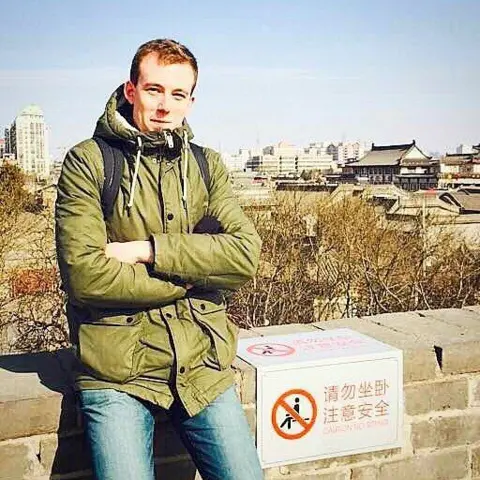 Christopher Berry
Christopher BerryIn a statement released through his solicitor, Mr Cash told the BBC: “I have, for a long time, been concerned by the influence of the Chinese Communist Party (CCP) in the United Kingdom and, prior to these false allegations, was working to inform Parliamentarians and the public about those risks.”
Mr Cash and Mr Berry would talk and exchange messages between Westminster and China, according to the first of three witness statements by the deputy national security adviser Matt Collins to the CPS – released by the government on Wednesday.
For example, according to Mr Collins’ statement, Mr Cash told Mr Berry in June 2022 that he thought Jeremy Hunt would pull out of the Tory leadership race.
In July 2022, he allegedly sent a voice note saying that Tugendhat would almost certainly get a job in Rishi Sunak’s cabinet. Both these pieces of information ended up in reports that Mr Berry submitted to a man called “Alex”, who the prosecution said was a Chinese intelligence agent.
In his statement, Mr Cash said he was aware “a small amount of the information” he was sending to Mr Berry was being passed on. But he thought Mr Berry was working for “a strategic advisory company” helping clients “invest in the UK”.
Mr Cash said the information he gave Mr Berry was publicly available or “just political gossip that formed part of the everyday Westminster rumour mill”.
In a statement given to BBC News via his lawyer on Thursday, Mr Berry gives a similar account.
He said his reports were “provided to a Chinese company which I believed had clients wishing to develop trading links with the UK”.
Those reports “contained no classified information”, Mr Berry said, and “concerned economic and commercial issues widely discussed in the UK at the time and drew on information freely in the public domain, together with political conjecture, much of which proved to be inaccurate”.
 Council on Geostrategy
Council on GeostrategySome of the information was not for passing on. In the note to Mr Berry about Hunt, Mr Cash wrote: “v v confidential (defo don’t share with your new employer)”. Despite that, it was included in one of Mr Berry’s reports, according to one of Mr Collins’ statements.
Mr Cash and Mr Berry communicated using encrypted messaging apps.
Mr Collins’ first statement says that, after one exchange in December 2022, Mr Berry told “Alex” that the Foreign Secretary James Cleverly did not think sanctions would be effective in blocking imports from Xinjiang, the province where there are human rights abuses of the Uyghur population.
There were also a series of exchanges about meetings between Tugendhat, Kearns and Taiwanese defence officials, according to Mr Collins.
All of these exchanges ended up in a series of reports that Mr Berry submitted to “Alex” with titles like “Taiwan-perception-within-parliament” and “Import_of_Products_of Forced_Labour_from Xinjiang”.
Those reports then ended up with Cai Qi, and he seems to have been so pleased about the information that, in July 2022, Mr Berry met Cai. Mr Cash sent him a message saying: “You’re in spy territory now.”
According to Mr Berry, Cai asked “specific questions about each MP within the Conservative leadership election one-by-one”, Mr Collins said in his statement.
 Reuters
ReutersAt times – according to Mr Collins – “Alex” “tasked” Mr Berry with collecting specific information. On one occasion, the turnaround time was just 13 hours, he said in his first statement.
But both men categorically deny knowingly spying for China.
“I routinely spoke [to] and shared information with Christopher Berry about Chinese and British Politics,” he said in the statement given to BBC News on Wednesday night.
“He was my friend and these were matters we were both passionately interested in. I believed him to be as critical and concerned about the Chinese Communist Party as I was.
“It was inconceivable to me that he would deliberately pass on any information to Chinese intelligence, even if that information was not sensitive.”
Mr Cash said he had been “placed in an impossible position” by the release of Mr Collins’ statements, which were “devoid of the context that would have been given at trial”, where they would have been subject to a “root and branch challenge”.
He insisted that the assessments “would not have withstood the scrutiny of a public trial”.
Mr Berry said he had “consistently denied any wrongdoing” but had found himself “subjected to a trial by media” and caught in the middle of various groups seeking “to use the case to their political advantage”.
He said he did not accept that, by making the reports, he was “providing information to the Chinese intelligence services, nor is it tenable that the provision of such material could, in any sense, be considered for a purpose prejudicial to the safety or interests of the state”.
He added: “This would have been one of many issues raised with the jury during a trial.”
Eminem’s rarely-seen ex Kim Mathers looks completely different with pink hair as she’s spotted outside her Michigan home
EMINEM’S reclusive ex-wife Kim Mathers showcased a new look after dying her hair pink as she stepped out near her home in Michigan.
Kim, 50, who had long blonde locks in the past, is seen in The U.S Sun’s exclusive photos with a cropped ‘do.
The rap superstar’s former wife, who has four children, is now heavily tattooed with sleeve designs down both of her arms after adopting a rocker look in recent years.
Her elaborate inkings include the word Artemis down her right arm, referencing the Greek goddess of the hunt, wild animals, and wilderness scenes.
Kim also has other dark inkings on her left arm and on her neck, many of which have an Alice in Wonderland theme, as she previously revealed she is a fan of the Lewis Carroll story.
She appeared in good health after a previous addiction battle and was seen smiling while wearing a black t-shirt with a colorful Nirvana design emblazoned on the front.
Kim matched her cut-up tee with a pair of light jogging bottoms and a pair of black shades.
In 2023, she revealed to The U.S. Sun that she was clean and sober after undergoing a 45-day rehab stint after she was left heartbroken by the death of her beloved mom, Kathy Sluck.
Audio from a 911 call in July 2022 revealed one of Kim’s children found her “surrounded by blood and pills on her bathroom floor,” as she struggled to cope with her grief.
They broke the handle on the door and called for help, as desperate Kim begged them not to call the police after reportedly leaving notes for her family.
The mom-of-four was rushed to the hospital before being discharged, and later sought treatment for addiction at a center in Detroit, Michigan.
HEALTH BATTLE
A year later, she told The U.S. Sun: “It’s been hard, I lost my mom, my dad, and my sister [over the past 10 years].
“[But] I’m good. I’ve been clean since about October. I went to Jefferson House … for 45 days.”
Kim revealed she had previously been taking pills to try and sleep as she struggled with the loss, and her children had been “very supportive,” amid her mental health scare.
Despite her past drama with ex Eminem, real name Marshall Mathers, she added that he had also been checking in with her to make sure she was getting better.
Asked how often she sees the rapper, she joked: “Not often, but often enough.”
The two wed in 1999 but divorced in 2001.
Despite reconciling and marrying a second time in 2006, the union did not work out.
The pair have a daughter, Hailie Jade, 29, along with an adopted daughter, Alaina, 32, with Eminem.
Alaina’s mother, Dawn, who was Kim’s sister, died of a drug overdose in 2016 after years of addiction problems.
Kim is also mom to Stevie Laine, 22, who identifies as non-binary, and was also raised by the rapper, 52.
In recent years, she has been living with her rarely-seen son, Parker, who is believed to be in his teens.
Both Stevie and Parker are from different relationships since her divorce from the superstar.
BABY JOY
Following her health issues, Kim and Marshall reunited for Hailie’s wedding to her long-term partner, Evan McClintock.
Hailie and Evan then welcomed a baby, Kim and Marshall’s first grandchild, Elliot, in March this year.
Kim’s upbeat appearance this month comes as her adopted daughter, Alaina Scott, announced she is pregnant with her first child with her husband, Matt Moeller, whom she married in 2023.
Alaina shared the news on Instagram, as she attached a photograph of her surprising her spouse.
“THE BEST OF YOU + ME,” she wrote in October. “For months, I’ve carried a tiny heartbeat inside me, one that has already changed mine in every possible way.“
She continued, “There’s something indescribable about knowing there’s a little life growing, dreaming, and becoming, all while you go about your day, whispering prayers and hopes only they can hear.”
Alaina added, “I’ve never felt more grateful for this gift and to grow our family, something we’ve wanted for so long.
“Thank you God for this blessing. Baby M, we can’t wait to meet you, little one.”
Alaina shared a slew of photos of her surprising Matt with the news.
She can be seen leading him blindfolded into a room with gold balloons spelling out the words “BABY M”.
Matt then took the blindfold off and was presented with a shoebox with a pair of baby Nike sneakers inside and a positive pregnancy test.
Travelers (TRV) Q3 2025 Earnings Call Transcript

Image source: The Motley Fool.
Date
Thursday, Oct. 16, 2025 at 9:00 a.m. ET
Call participants
Chairman and Chief Executive Officer — Alan Schnitzer
Chief Financial Officer — Dan Frey
President, Business Insurance — Greg Toczydlowski
President, Bond & Specialty Insurance — Jeffrey Klenk
President, Personal Insurance — Michael Klein
Senior Vice President, Investor Relations — Abbe Goldstein
Need a quote from a Motley Fool analyst? Email [email protected]
Takeaways
Core Income — $1.9 billion in core income, or $8.14 per diluted share, driven by underwriting gains and increased investment income.
Return on Equity — Core return on equity was 22.6% for the quarter; trailing twelve-month core return on equity at 18.7%.
Underwriting Income — $1.4 billion pretax, doubling compared to the prior-year quarter, aided by reduced catastrophe losses and a 1.7-point improvement in the underlying combined ratio to 83.9%.
Net Investment Income (After Tax) — $850 million, a 15% year-over-year increase, driven by fixed income portfolio growth and higher yields.
Net Written Premiums — $11.5 billion in net written premiums, with Business Insurance at $5.7 billion (up 3%), Bond & Specialty at $1.1 billion, and Personal Insurance at $4.7 billion.
Segment Combined Ratios — Business Insurance: 92.9% (88.3% underlying); Bond & Specialty: 81.6% (85.8% underlying); Personal Insurance: 81.3% (77.7% underlying).
Shareholder Capital Return — $878 million returned, with $628 million in share repurchases and $250 million in dividends.
Adjusted Book Value Per Share — Adjusted book value per share was $150.55 at quarter end, up 15% from a year earlier.
Expense Ratio — 28.6% (year-to-date 28.5%), with management maintaining a 28% target for both 2025 and 2026.
Catastrophe Losses — $42 million pretax, described as “benign,” driven largely by tornado and hail events in the Central U.S.
Net Favorable Prior Year Reserve Development (PYD) — $22 million pretax (includes $277 million asbestos charge in Business Insurance, offset by favorable PYD in other lines).
Operating Cash Flow — Record $4.2 billion, with holding company liquidity of $2.8 billion at quarter end.
Share Repurchase Outlook — Management expects Q4 repurchases to reach about $1.3 billion, with a total of approximately $3.5 billion projected over Q3 2025 through Q1 2026, equating to a 5% reduction in share count.
Business Insurance Pricing Metrics — Renewal premium change (RPC) of 7.1% segment-wide, increasing to 9% ex-property; renewal rate change of 6.7%; retention at 85%.
Bond & Specialty Insurance — Segment retention of 87% in management liability, renewal premium change of 3.7% in domestic management liability, and a 40% increase in new lines of business sold to existing customers (private and nonprofit).
Personal Insurance Homeowners Metrics — Renewal premium change at 18%, expected to decrease to single digits in early 2026 as insured values align with replacement costs; retention at 84%.
Personal Insurance Auto Metrics — Combined ratio of 84.9%, underlying combined ratio of 88.3%, auto new business premium up year-over-year for the fourth consecutive quarter; retention at 82%.
Investment Portfolio Update — Portfolio grew by approximately $4 billion; more than 90% in fixed income with an average credit rating of AA; net unrealized investment loss narrowed from $3 billion to $2 billion after tax.
Debt Issuance — $1.25 billion issued (split between $500 million ten-year and $750 million thirty-year notes) for ordinary capital management.
Technology Investment — $13 billion invested since 2016 in technology, enabling a 300-basis-point reduction in expense ratio and access to over 65 billion clean data points to power AI and analytics initiatives, as disclosed by management.
Summary
Travelers (TRV -3.30%) reported substantial earnings growth, citing record profitability driven by improved underwriting and investment performance. Management highlighted excess capital and liquidity, with plans to accelerate share repurchases through Q1 2026 and indicated additional buybacks linked to the Canadian operations sale, specifically referencing a three-quarter period. The call outlined targeted underwriting strategies, with disciplined risk selection in property and actions to optimize exposure in high-catastrophe geographies. The company emphasized advancements in technology and AI, quantifying its scale, data advantage, and focus on sustainable cost improvements and operating leverage. Leadership reaffirmed a measured approach to capital deployment, prioritizing technology and potential M&A before returning excess to shareholders.
Chairman Schnitzer said, “we anticipate a higher level of share repurchase over the next couple of quarters,” underscoring shareholder return as a key use of surplus capital.
CFO Frey stated, “Our outlook for fixed income NII, including earnings from short-term securities, has increased from the outlook we provided a quarter ago,” signaling rising yield expectations for the investment portfolio.
President Klein provided forward guidance: We expect RPC to remain elevated and then drop into single digits beginning in early 2026.
President Toczydlowski disclosed middle market new business of $391 million—its highest third-quarter result—up 7% from the prior year, despite selective property underwriting and competitive market dynamics.
Industry glossary
Renewal Premium Change (RPC): The percentage change in premium for renewed policies, reflecting both pricing actions and changes in exposure or insured value.
Combined Ratio: A measure of underwriting profitability, calculated by summing incurred losses and expenses as a percentage of earned premiums; a ratio below 100% indicates underwriting profit.
PYC/PYD (Prior Year Reserve Development): The adjustment (favorable or unfavorable) to reserves set aside in prior periods for claims, as new information becomes available.
Retention: The proportion of policies or premium renewed with the company, stated as a percentage.
Middle Market: The business segment serving mid-sized commercial insurance customers, distinct from small businesses (“Select”) and large national accounts.
Travis: Travelers’ proprietary digital experience platform for distribution partners.
Full Conference Call Transcript
Alan Schnitzer chairman and CEO Dan Frey CFO and our three segment presidents. Greg Toczydlowski of Business Insurance, Jeff Klenk of Bond and Specialty Insurance, and Michael Klein of Personal Insurance. They will discuss the financial results of our business and the current market environment. They will refer to the webcast presentation as they go through prepared remarks, and then we will take questions before I turn the call over to Alan, I’d like to draw your attention to the explanatory note included at the end of the webcast presentation. Our presentation today includes forward looking statements. The company cautions investors that any forward looking statement involves risks and uncertainties and is not a guarantee of future performance.
Actual results may differ materially from those expressed or implied in the forward-looking statements due to a variety of factors. These factors are described under forward-looking statements in our earnings press release and in our most recent 10-Q and 10-Ks filed with the SEC. We do not undertake any obligation to update forward-looking statements. Also, in our remarks or responses to questions, we may mention some non-GAAP financial measures. Reconciliations are included in our recent earnings press release, financial supplement, and other materials available in the Investors section on our website. And now I’d like to turn the call over to Alan Schnitzer.
Alan Schnitzer: Thank you, Abby. Good morning, everyone, and thank you for joining us today. We are pleased to report excellent third-quarter results. We earned core income of $1.9 billion or $8.14 per diluted share. Our return on equity for the quarter was 22.6%, bringing our core return on equity for the trailing twelve months to 18.7%. Very strong underwriting results and higher investment income drove the bottom line. Underwriting income of $1.4 billion pretax more than doubled compared to the prior year quarter, benefiting from both the lower level of catastrophe losses and higher underlying underwriting income. The underlying result was driven by higher net earned premiums and an underlying combined ratio that improved 1.7 points to an exceptional 83.9%.
Underwriting income was higher in all three segments. Our high-quality investment portfolio also continued to perform well, generating after-tax net investment income of $850 million for the quarter, up 15%, driven by strong and reliable returns from our growing fixed income portfolio. Our underwriting and investment results, together with our strong balance sheet, enabled us to return almost $900 million of capital to shareholders during the quarter, including $628 million of share repurchases. At the same time, we continue to make strategic investments in our business. Even after this deployment of capital, adjusted book value per share was up 15% compared to a year ago.
With strong results over the past year and a particularly light cat quarter, we have a higher than usual level of excess capital and liquidity. Consequently, we anticipate a higher level of share repurchase over the next couple of quarters. Dan will have more to say about that in a minute. Turning to the top line, we grew net written premiums to $11.5 billion in the quarter. In business insurance, we grew net written premiums by 3% to $5.7 billion, led by 4% growth in our domestic business. Excluding the property line, we grew domestic net written premiums in the segment by more than 6%. The declining premium volume in property continues to be a large account dynamic.
In fact, we grew property in both middle market and small commercial. We’ve seen this dynamic in the large property market before, and we won’t compromise our underwriting discipline. Over time, particularly as catastrophic events inevitably unfold, the value of that discipline and the cost to those who abandon it will become unmistakable. Renewal premium and change in business insurance was 7.1%, driven by continued historically high RPC in our middle market and select business businesses. Excluding the property line, renewal premium change in the segment was a very strong 9%, and renewal rate change was a very strong 6.7%. Greg will share additional detail by line. Retention in the segment was 85%.
Given the high quality of the book, we were very pleased with that result. In Bond and Specialty Insurance, we grew net written premiums to $1.1 billion with higher renewal premium change and continued strong retention of 87% in our high-quality management liability business. Net written premiums in our market-leading surety business remained strong. In personal insurance, written premiums were $4.7 billion with strong renewal premium change in our homeowners business. You’ll hear more shortly from Greg, Jeff, and Michael about our segment results. As we head toward the end of the year, our planning for 2026 is well underway. As always, that process involves assessing the environment ahead.
There are uncertainties out there: economic, political, geopolitical, not to mention the loss environment. We are very confident that we’re built and very well positioned for whatever lies ahead. We’re operating from a position of considerable strength. Profitability is strong, reflecting our leading underwriting expertise and the operating leverage we’ve built through a sustained focus on productivity and efficiency. Our competitive advantages have never been stronger or more relevant. Strong underwriting is the flywheel that sets everything in motion. Our premium growth at attractive margins has generated strong cash flow, which enables us to make strategic investments in our business, return excess capital to shareholders, and grow our investment portfolio.
Since 2016, we have successfully invested $13 billion in technology, returned more than $20 billion of excess capital to our shareholders, and grown our investment portfolio by nearly 50% to more than $100 billion. Scale matters, increasingly so. We have the scale to win in an environment where technology and AI will continue to segment the marketplace. We have a track record of identifying the right strategic priorities and driving value from them. You can see that in the 300 basis point reduction we’ve achieved in our expense ratio since 2016, even while we were significantly increasing our overall technology spend.
Importantly, our size gives us the data to power AI, creating a virtuous cycle: better insights, better decisions, better outcomes, more resources to invest. For example, our long-time focus on organizing and curating data has given us access to more than 65 billion clean data points from decades of history across multiple business lines. We leverage that to sharpen our underwriting and shape our claim strategies. With the vast majority of our business in North America, we hold a leading position in the largest and most stable insurance market in the world, an advantage that insulates us from much of the risk arising from the economic instability and geopolitical uncertainty around the globe.
Our fortress balance sheet and exceptional cash flow provide us with the financial strength to invest consistently in the business regardless of the external conditions. Our financial strength also enables us to manage comfortably through large loss events like the January California wildfires. When it comes to the loss environment, from weather volatility to the impact of social inflation on casualty lines, no one is better positioned. Diversification provides powerful protection. In fact, our business mix produces a consolidated loss ratio that’s actually less volatile than the loss ratio of our least volatile segment. That’s the power of a balanced and diversified portfolio. Equally important is our demonstrated ability to confront the loss environment head-on.
We have the data, the analytics, and the discipline to establish reserves and loss picks appropriately and generally ahead of the market. That matters because until you have an accurate view of the loss environment, your risk selection, underwriting, and claim strategies are all operating with the wrong inputs. Since our early identification of the acceleration of social inflation in 2019, we’ve grown the business and delivered significantly improved margins. Getting an accurate and timely view of the loss environment isn’t just about the balance sheet. It’s foundational to running the business effectively. Our internally managed investment portfolio was another source of strength.
Our disciplined focus on achieving appropriate risk-adjusted returns has served us exceptionally well through various markets, especially during periods of market turmoil. More than 90% of our portfolio is in fixed income with an average credit rating of AA. We’re highly selective. We don’t reach for yield. We hold the vast majority of our fixed income securities to maturity. And we carefully coordinate the duration of our assets and liabilities. The track record speaks for itself. Our default rates during the most challenging environments over the past two decades were a fraction of industry averages. This consistency comes from a world-class investment team, with extraordinary tenure and a shared long-term perspective.
In short, the franchise we’ve built, the capabilities we’ve developed, and our depth of expertise create advantages that are durable across operating environments. Before I wrap up, I’ll share that we’re just back from one of the industry’s premier conferences, where we had the opportunity to meet with dozens of our key agents and brokers, who collectively represent a substantial amount of our business. We left as convinced as ever that our position with the independent distribution channel is an unmatched strategic advantage. We heard clearly that our strategic investments are resonating and that looking ahead, we’re focused on the right priorities to extend that advantage. I want to acknowledge and thank all of our distribution partners.
I also want to reiterate our unwavering commitment to being an indispensable partner for them and the undeniable choice for their customers. To sum it up, we’re very well positioned and very optimistic about the road ahead. And with that, I’m pleased to turn the call over to Dan.
Dan Frey: Thank you, Alan. In the third quarter, we once again delivered excellent financial results on a consolidated basis and in each of our three segments. Core income for the quarter of $1.9 billion resulted in core return on equity of 22.6%, reflecting both excellent underwriting results and strong investment income. We generated higher levels of written premium and earned premium while delivering excellent combined ratios on both a reported and underlying basis. At 83.9%, the underlying combined ratio marked its fourth consecutive quarter below 85. The combination of higher premiums and the excellent underlying combined ratio led to an 18% increase in after-tax underlying underwriting income, which surpassed $1 billion for the fifth consecutive quarter.
The expense ratio for the third quarter was 28.6%, bringing the year-to-date expense ratio to 28.5%. We continue to expect an expense ratio of around 28% for the full year 2025 and expect to manage to that level again in 2026. Catastrophe losses in the quarter were fairly benign at $42 million pretax, consisting mainly of tornado hail events in the Central United States. Turning to prior year reserve development, we had total net favorable development of $22 million pretax. In Business Insurance, the annual asbestos review resulted in a charge of $277 million. Excluding asbestos, business insurance had net favorable PYD of $152 million driven by continued favorability in workers’ comp.
In Bond and Specialty, net favorable PYD was $43 million pretax with favorability in Fidelity and Surety. Personal insurance had net favorable PYD of $104 million pretax driven by favorability in auto. After-tax net investment income of $850 million increased by 15% from the prior year quarter. Fixed maturity NII was again the driver of the increase, reflecting both the benefit of higher invested assets and higher average yields. Returns in the non-fixed income portfolio were also up from the prior year quarter. During the quarter, we grew our investment portfolio by approximately $4 billion. Our outlook for fixed income NII, including earnings from short-term securities, has increased from the outlook we provided a quarter ago.
And we now expect approximately $810 million after tax in the fourth quarter. For 2026, we expect more than $3.3 billion, with quarterly figures starting at around $810 million in Q1 and growing to around $885 million in Q4. New money rates as of September 30 are roughly 70 to 75 basis points above the yield embedded in the portfolio. Turning to capital management. Operating cash flows for the quarter were a new record at $4.2 billion, and we ended the quarter with holding company liquidity of approximately $2.8 billion.
Interest rates decreased during the quarter, and as a result, our net unrealized investment loss decreased from $3 billion after tax at June 30 to $2 billion after tax at September 30. Adjusted book value per share, which excludes net unrealized investment gains and losses, was $150.55 at quarter end, up 8% from year end and up 15% from a year ago. Also of note for Q3, we issued $1.25 billion of debt back in July, with $500 million of ten-year notes and $750 million of thirty-year notes. This was simply ordinary course capital management, maintaining a debt-to-capital ratio in our target range as we continue to grow the business.
Sticking with the theme of capital management, we returned $878 million of our capital to shareholders this quarter, comprising share repurchases of $628 million and dividends of $250 million. As Alan shared, our very strong earnings over the past year have provided us with an elevated level of capital and liquidity well in excess of what we had planned to use for investment and to support continued growth. As a result, we expect to increase the level of share repurchases in the fourth quarter to roughly $1.3 billion.
Also, keep in mind that we previously shared our plan to deploy about $700 million from the sale of our Canadian operations, expected to close in early 2026, for additional share repurchases as well. So if we look across the three-quarter period from Q3 2025 through Q1 2026, our repurchases in Q3 combined with our current outlook for the next two quarters has us repurchasing a total of somewhere around $3.5 billion worth of our stock. Using the average share price over the past thirty days for purchases during the next two quarters, that would result in a reduction of our outstanding share count of about 5% in the nine-month period.
Of course, the actual amount and timing of repurchases will depend on a number of factors, including the timing of the closing of the transaction in Canada, actual quarterly earnings, and other factors we disclose in our SEC filings. Recapping our results, Q3 was another quarter of excellent underwriting profitability on both an underlying and as-reported basis, and another quarter of rising net investment income. These strong fundamentals delivered core return on equity of 22.6% for the quarter and 18.7% on a trailing twelve-month basis, and position us very well to continue delivering strong results in the future. And now for a discussion of results in Business Insurance, I’ll turn the call over to Greg.
Greg Toczydlowski: Thanks, Dan. Business Insurance had a very strong quarter, delivering a record third-quarter segment income of $907 million and an all-in combined ratio of 92.9%. The quarter reflected relatively benign catastrophes and the continued strong contribution from our exceptional underlying underwriting results. This quarter’s underlying combined ratio of 88.3% marked the twelfth consecutive quarter where we’ve produced an underlying combined ratio below 90%. We’re pleased that our ongoing strategic investments have contributed to this sustained level of profitability. In particular, through meaningful advancements in data and analytics, we continue to advance our underwriting tools.
One specific highlight is the development and utilization of sophisticated models that derive risk characteristics, refine technical pricing, and summarize historical and modeled loss experience, all of which is provided to our underwriters at the point of sale. Moving to the top line, our net written premiums increased to an all-time third-quarter high of $5.7 billion. We grew our leading middle market and select businesses by 7% and 4%, respectively. These two markets make up 70% of the net written premiums in business insurance. We saw a decline in net written premiums in National Property and Other, which, as you heard from Alan, reflects our disciplined execution in terms of risk selection, pricing, and terms and conditions.
As for production across the segment, pricing remained attractive with renewal premium change just over 7%. Renewal premium change remains strong in select and middle market. From a line of business perspective, renewal premium change was positive in all lines, double digits in umbrella, CMP, and auto, and up from the second quarter or stable in all lines other than property. As you heard from Alan, excluding the property line, renewal premium change in this segment was 9%. Retention remained excellent at 85%, and new business of $673 million was about flat to a very strong prior year level. We’re very pleased with these production results and particularly our field’s execution for our proven segmentation strategy.
Across the book, pricing and retention results this quarter reflect excellent execution, aligning price, terms, and conditions with environmental trends for each lot. As for the individual businesses, in select, renewal premium change of 10.8% was about flat with the second quarter. Retention ticked up as expected as we near completion of our targeted CMP risk return optimization efforts. And lastly, for Select, we generated new business of $134 million, up 3% over the prior year. As we’ve mentioned previously, we’ve made meaningful strategic investments in this market in both product and user experience.
Our new BOP and auto products have been well received in the market, and we’re pleased that the industry-leading segmentation contained in both products is contributing to profitable growth. We’re also very pleased with the success of Travis, our digital experience platform for our distribution partners. As we continue our strategic rollout, Travis is already producing over 1 million transactions annually. In our core middle market business, renewal premium change of 8.3% was also about flat sequentially from the second quarter. Price increases remain broad-based as we achieved higher prices on more than three-quarters of our middle market accounts. And at the same time, the granular execution was excellent, with meaningful spread from our best-performing accounts to our lower-performing accounts.
We’re pleased that retention of 88% remained exceptional given the level of price increases we achieved. And finally, new business of $391 million was our highest ever third-quarter result and up 7% over the prior year. We’re pleased with the new business risk selection and strength of pricing and overall with the combination of strong returns and customer growth in middle market. On a strategic note for middle market, we continue to enhance our industry-leading underwriting workstation with models that assess new business opportunities for risk characteristics with the propensity to produce the highest level of lifetime profitability.
This information helps our field organization focus on the highest priority opportunities, resulting in a greater likelihood of success in winning more accounts that contribute to strong margins. To sum up, Business Insurance had another terrific quarter. We’re pleased with our execution in driving strong financial and production results while continuing to invest in the business for long-term profitable growth. With that, I’ll turn the call over to Jeff.
Jeffrey Klenk: Thanks, Greg. Bond and Specialty delivered very strong third-quarter results. We generated segment income of $250 million and an outstanding combined ratio of 81.6%, nearly one point better than the prior year quarter. The strong underlying combined ratio of 85.8% drove very attractive returns in the segment. Turning to the top line, we grew net written premiums in the quarter to $1.1 billion. In our high-quality domestic management liability business, renewal premium change improved to 3.7% while retention remained strong at 87%. These results reflect our intentional and segmented initiatives to improve pricing in certain lines, with a focus on employment practices liability, cyber, and public company D&O.
We’re pleased with the strong underlying pricing segmentation achieved by our outstanding field organization on both renewal and new business, enabled by our advanced analytics and sophisticated pricing models. New business was lower than in 2024, as Corvus production was reflected as new business in the prior year quarter and is now mostly reflected as renewal premium. Comparisons to prior year new business levels will be similarly impacted for the remainder of the year. Outside of the Corvus impact, we’re pleased with early returns on multiple tech and operational investments we’ve made to drive account growth. For example, in our private and nonprofit business, we’re leveraging predictive analytics and AI to enhance our customer segmentation and sales effectiveness.
We’re pleased that these initiatives drove a 40% increase in new lines of business sold to existing customers as compared to the prior year quarter. Turning to our market-leading surety business, where production can be lumpy based on the timing of bonded construction projects, net written premiums remain strong relative to the record high quarter in the prior year. This reflects our customers’ continued confidence in our industry-leading surety expertise and value-added service offerings, as well as benefits from digital investments we’ve made to enhance distribution experiences in our small commercial surety business.
So we’re pleased to have once again delivered strong results this quarter, driven by our continued underwriting and risk management diligence, excellent execution by our field organization, and the benefits of our market-leading competitive advantages. And with that, I’ll turn the call over to Mike.
Michael Klein: Thanks, Jeff, and good morning, everyone. In Personal Insurance, we delivered third-quarter segment income of $807 million, an excellent result that reflects the continued impact of our disciplined approach to selecting, pricing, and managing risks. The combined ratio of 81.3% improved 11 points relative to the prior year quarter, driven primarily by lower catastrophe losses and a lower underlying combined ratio. The underlying combined ratio of 77.7% was five points better compared to the prior year quarter, driven by continued improvement in both homeowners and other and auto.
Net written premiums of $4.7 billion in the third quarter reflect our continued focus on improving profitability in homeowners while seeking growth in auto as we execute our strategies to deliver appropriate risk-adjusted returns across the portfolio. The ceded premium impact of the enhanced personal insurance excess of loss reinsurance program we announced last quarter reduced net written premium growth in the quarter by one point as the full year’s worth of ceded premium was booked in the third quarter. In auto, the third-quarter combined ratio was very strong at 84.9%, reflecting lower catastrophe losses, a strong underlying combined ratio, and favorable net prior year development.
The underlying combined ratio of 88.3% improved by 2.9 points compared to the prior year quarter. The improvement was driven by favorable loss experience in bodily injury and, to a lesser extent, vehicle coverages. Similar to last year’s third-quarter result, this quarter’s underlying combined ratio included a two-point benefit related to the re-estimation of prior quarters and the current year. The year-to-date underlying combined ratio was also 88.3%, reflecting sustained profitability in an auto book that is larger than it was five years ago, both in terms of premium dollars and policy count.
Looking ahead to 2025, it’s important to remember that the fourth-quarter auto underlying loss ratio has historically been six to seven points above the average for the first three quarters because of winter weather and holiday driving. In Homeowners and Other, the third-quarter combined ratio of 78% improved by 13.5 points compared to the prior year quarter, primarily because of lower catastrophe losses and improvement in the underlying combined ratio. Net prior year development was favorable but lower compared to the prior year. The underlying combined ratio of 68% improved by almost 6.5 points compared to the prior year quarter. The year-over-year favorability in homeowners was primarily related to the benefit of earned pricing, as well as favorable non-catastrophe weather.
Overall, these outstanding results reflect favorable weather conditions throughout the third quarter, along with our actions to manage exposures in high catastrophe risk geographies to help optimize risk and reward. Turning to production, we’re making progress in positioning our diversified portfolio to deliver long-term profitable growth. While our production results don’t quite show it yet, we’re confident that the actions we’re taking will build momentum toward this objective. In domestic auto, retention of 82% remained consistent with recent quarters. Renewal premium change of 3.9% continued to moderate and will continue to decline in the fourth quarter, reflective of improved profitability and our focus on generating growth.
Auto new business premium was up year over year for the fourth consecutive quarter, as new business momentum continued in states less impacted by our property actions. In Homeowners and Other, retention of 84% remained relatively consistent with recent quarters. Renewal premium change remained strong at 18%, as we continue to align replacement costs with insured values. We expect RPC to remain elevated in the fourth quarter and then drop into single digits beginning in early 2026 as values will have largely aligned with replacement costs. We continued to execute actions to reduce exposure and manage volatility in high-risk catastrophe geographies in the quarter, causing further declines in property new business premium and policies in force.
Most of our property actions will be completed by the end of the year, at which point the downward pressure on both property and auto growth should begin to moderate. As we conclude this year and head into 2026, we’re focused on building momentum toward generating profitable growth.
To that end, we have a range of actions currently or soon to be in market, including the following: adjusting pricing, appetite, terms, and conditions to better reflect improved profitability in both Auto and Home; removing temporary binding restrictions and winding down some of our property new non-renewal actions in certain geographies; appointing new agents and partnering with existing agents to consolidate books of business; continuing to modernize our specialty products and platforms; and investing in artificial intelligence and digitization to deliver better experiences for our agents and customers. These messages resonate as we share them in the marketplace, reinforcing our commitment to being the undeniable choice for consumers and an indispensable partner for our agents.
To sum up, we delivered terrific segment income as our team continued to invest in capabilities and deliver value to customers and agents. These results position us well to build on a long track of profitably growing our business over time. Now I’ll turn the call back over to Abby.
Abbe Goldstein: Thanks, Michael. And with that, we’re ready to open up for Q&A.
Operator: Thank you. We will now begin the question and answer session. Your first question today comes from the line of Gregory Peters from Raymond James.
Gregory Peters: Well, good morning, everyone. Boy, you’re producing great bottom line results. Kind of surprising the stock’s down as much as it is on the open. I think it’s probably a reflection of the top line. And I know you spoke in detail about the different headwinds that you’re facing, whether it’s in business insurance, the property, Corvus and Bond and Specialty, or the underwriting actions in personal insurance that have affected your top line. When you go beyond the balance of this year and you start thinking at 26%, 27%, what does the Travelers business model look like in terms of top line growth on a consolidated basis? And how are you thinking about them?
Alan Schnitzer: Hey, good morning, Greg. It’s Alan. Thanks for the thoughts and the question. So we’re not going to give outlook on the top line, as you can imagine. But clearly, we understand that in order to meet our objective of delivering industry-leading return on equity over time, we need to grow over time. So it’s a priority for us. And if you look back over the last couple of years, we’ve been very successful with that. In our, you know, we, as you noted by segment, we’ve talked about what’s driving the results this quarter. But I guess what I would say is we are very confident that we’ve got the right value proposition.
We’re investing in the right capabilities to make sure we’re positioned to grow this business. So we feel very good about the execution in the quarter. We feel very good about what we’ve accomplished in recent periods, and we feel very good about the outlook.
Gregory Peters: Okay. The other I seem to ask this like every other quarter on the technology front, but you keep bringing it up, talked about the digital initiative you have going on in business insurance. Talk about some of the stuff going on in personal insurance. I think one of your peers came out earlier in the third quarter and talked about the potential of artificial intelligence to deliver human resource savings and headcount reductions over time of maybe up to 20%.
I’m just curious if we can just go back to, I know you’ve got best use case on technology and AI, but go back to how you’re thinking about this in the three to five-year period in terms of what it might mean to your expense ratio?
Alan Schnitzer: Yes. So Greg, I’ll tell you, we are very bullish on AI, and we’re leaning into it. You know, we’re spending, you know, more than a billion dollars a year on technology. A lot of that is focused on AI. We expect significant benefits from it. And I think we’ve got a long track record, as I said in my prepared remarks, of identifying the right strategic initiatives and driving value from them. We’re not going to tell you what our plan is for the expense ratio beyond next year, but I’ll also tell you that more than our focus is on the expense ratio, it’s on creating operating leverage.
And that’s what gives us the flexibility to deploy those gains however we want to deploy them. And so maybe it’ll be efficiency, maybe it’ll be productivity, but we are very bullish about the opportunity for investments that we have underway. We’re very bullish about the data we have to fuel the AI. And think that it’ll make a big difference in the years to come.
Gregory Peters: Got it. Thanks for the answers.
Operator: Thank you. Your next question comes from the line of David Motemaden from Evercore. Your line is open.
David Motemaden: Hey, thanks. Good morning. I had a question. You gave the RPC and rate ex property. I was wondering, that’s a new disclosure. Wondering if you can just talk about what that was last quarter versus this quarter and then maybe zooming in specifically in business insurance. What do you guys see in property pricing outside of national property this quarter?
Greg Toczydlowski: Yes, certainly. Well, on the first one, David, it is a metric that we’re not going to give every quarter, and we’re not going to go back and give that. We offered it up this quarter just to give you some color and let you know how much property the leverage it had on the pricing for this particular quarter. As we’ve shared with you, the large property has definitely been a market where typically leads in terms of when softening may happen, and it certainly has been the case over the last couple of quarters. In the select and middle market, to directly answer your question, we continue to get positive price increases there.
But it’s certainly, we’re feeling some deceleration. But again, certainly still seeing positive increases.
David Motemaden: Got it. Thank you. And then maybe this is just sort of related to your answer there. But on business insurance premium growth by market. So it’s good to see the tick up in select year over year and national accounts, you know, sort of we know the story there. But I’m surprised we saw the deceleration in growth in middle market. I was hoping you could just impact that a little bit. Is that just sort of the property dynamics you just mentioned?
Greg Toczydlowski: Yes. And if you’re looking at overall quarter of middle market, I think you’re reading that wrong. The quarter alone was up for middle market 7% relative to year to date of five.
David Motemaden: Got it. Yeah. No, I was just looking at the because I know 1Q had the reinsurance dynamic. So I was just comparing it to 2Q, the 10 decelerating to seven. That’s what I was looking at there. But, no, appreciate the answer.
Operator: Your next question comes from the line of Mike Zaremski from BMO. Your line is open.
Michael Zaremski: Great. My first question is on the loss cost trend line. I know it’s not easy pinning a broad brush, but if we look at kind of your reserve release trend line, loss ratio trend line, we’re also adding IBNR. But a lot of good things going on. Curious if your view on loss cost inflation has changed at all or directionally, is it the I feel like you’ve only raised it over recent years. Over long periods of time. It flattening out? Thanks.
Dan Frey: Hey, Mike, it’s Dan. So another quarter of net favorable PYD despite the asbestos charge. I don’t really think you can put a trend on PYD. Really what matters for us is in aggregate across the enterprise is that favorable or unfavorable, and we’ve got now a very long track record of generally having that favorable. As it relates to loss trend, we haven’t explicitly commented on loss trend for a while because we think it’s just too narrow a way to look at the business in terms of what’s pure rate versus what’s some blended number of loss trend, but it hasn’t moved dramatically in recent periods. Alan’s talked about that in prior quarters.
We do take a look at it every quarter. Some lines do move up a little bit. Some lines do move down a little bit over time. But it’s been pretty stable for a while now. Mike, there was nothing in the quarter that particularly surprised us when it comes to loss activity.
Michael Zaremski: Okay, great. And my follow-up is honing in on the home segment. Maybe you need a comment on auto too since there’s a lot of bundle in there. But if we look at the RPC trends, they remain very high on I’m assuming there’s terms and conditions changes that you’re incorporating in kind of those double-digit RPC increases. But the last few years haven’t been great for you all in the industry. Consensus kind of has you guys pegged at a 95 combined ratio for the foreseeable future in home. If you can kind of remind us what do we expect RPC to eventually fall? Are those terms and conditions changes going to help?
Is 95% the right combined ratio that you guys are targeting given how profitable auto is? Thanks.
Michael Klein: Sure. Thanks, Mike. It’s Michael. So just to unpack the RPC part of your question for starters, as I mentioned in my prepared remarks, RPC remains elevated. Again, it’s rate and exposure, right? So RPC remains elevated largely because we’re raising insured limits to keep up with rising replacement costs. And my point about RPC dropping to single digits in 2026 is we’ll have largely caught up in getting replacement costs in line with insured values. And so the change in RPC as we head into 2026 will really be those the premium impact from increasing coverage A, the dwelling limits on property coming back to more normal levels.
Yes, baked into RPC is also a reflection of a number of the other actions we’re taking on the book. I think increasing deductibles, particularly across the Midwest, think different strategies around targeted limits on how big a coverage A we’re going to write in some hail-prone geographies, other things like that are all rolled into that figure. And again, I think it’s just reflective of the actions that we’re taking to improve the profitability of that book. As respect to target combined ratio, we’re not going to really disclose the target combined ratio by line. We are certainly encouraged by the progress we’ve made, particularly in improving the underlying combined ratio in property.
It’s down period to period, quarter over quarter for something like the last ten or eleven quarters in a row. So it’s demonstrative of the progress that we’re making there. And again, continue to be pleased with our progress there.
Operator: Your next question comes from the line of Meyer Shields from KBW. Your line is open.
Meyer Shields: Great, thanks. Good morning. I don’t know if this is a question for Alan or Greg, but is there really a disentangling the how much of a property premium decline in BI is from nonrenewed business as opposed to accepting lower rates because you still have adequacy?
Alan Schnitzer: Meyer, I don’t think we’re gonna unpack that. Certainly not right here right now. I don’t think we’re gonna get into that level of detail. And I honestly, we don’t have that level of data at our fingertips right now.
Meyer Shields: Okay. Fair enough. Also, to talk a little bit, Michael talked about, I guess, book rolls in personal lines. Does that involve any changes to agency commissions? Or what other tools are you using to encourage that?
Michael Klein: Sure, Meyer. Thanks for the question. Yes. So typically, and again, book growth consolidations in the personal lines space are pretty much standard operating procedure. We had stepped away from them. The reason I mentioned it is because we had stepped away from them as we were working to improve profitability. And I think it’s an important point to recognize that we’re back actively engaged in the marketplace in those conversations with agents looking for situations where their book of business may be disrupted for one reason or another. It is fairly typical in a book consolidation scenario to offer enhanced commission on that book roll for the first term as that business comes over.
Operator: Your next question comes from the line of Tracey Banque from Wolfe Research. Your line is open.
Tracey Banque: Good morning. My first question is for Mike. I’m curious what you’re seeing that’s driving favorable loss experience in bodily injury. And, to a lesser extent, vehicle coverages?
Michael Klein: Tracy. Thanks for the question. I mean, really is a combination of favorable frequency in both bodily injury and physical damage losses, as well as continued moderation in severity again really across coverages.
Tracey Banque: Got it. And a follow-up on Dan’s comment about elevated level of capital liquidity. Driven by your earnings that’s well in excess of your investment needed to growth. As you know, capital is a big focus for me. And I’ve really not seen so much excess capital for the entire sector. Is it fair to assume that your excess capital position surpasses the buyback targets you shared and could we expect concurrent deployment of capital on the technology side and or M and A.
Dan Frey: Yes, Tracy, it’s Dan. So I think I understand the question. So I guess I’d start by saying, look, there’s no change at all to what has been now our long-standing capital management philosophy, which is we’ve got a business that’s generating terrific margins. We generate a lot of capital. We generate more than we need just to support the growth of the business. First objective for that excess capital is going to be to find a way to deploy it and generate a return. And so we’ll make all the technology investments that we think we can and should make. Always be open to M and A, open to any opportunity to generate returns on an excess capital.
Once we’ve exhausted all those opportunities, then it’s not our capital, it’s the shareholders we’re going to give it back through dividends and buybacks.
Tracey Banque: Got it. Thank you.
Operator: Your next question comes from the line of Robert Cox from Goldman Sachs. Your line is open.
Robert Cox: Hey, thanks. Good morning. Yes, just wanted to go back to the removal of the growth restrictions. It looks like a couple of parts of the business, CMP, within Select and then also in homeowners you give us a sense of how much business is being unlocked for growth here? And if easing those can result in a noticeable uplift in growth?
Greg Toczydlowski: Robert, this is Greg. I’ll start off and then Michael can talk about the PI. We’ve been talking about the select mix optimization for some time now. And as we begin to finalize some of those actions, you saw a slight tick up in our retention. We’re not really going to quantify what that means for overall growth, but that was the reason that we pointed out the slight pickup in retention.
Michael Klein: Yeah. And Robert, Michael, up here on the personal lines side. I think the important point to note in terms of the impact on growth in personal insurance as we relax those property restrictions as our goal is to leverage that property capacity to write package business. And so if you my suggestion, if you want to sort of dimensionalize it, is just look back historically at retention in new business levels in property and in auto. You can see that retention remains depressed right now given the actions we’re taking. Again, the property actions depressed retention in both lines.
And you can see particularly in property the new business levels are pretty significantly depressed relative to what they’ve run historically. And so those levers, I think, would give you a way to kind of dimensionalize it.
Robert Cox: Okay, great. Thanks for the color there. And then I just wanted to follow-up on the business insurance underlying loss ratio. When you think about the margin improvements during this year, are we seeing improved picks in casualty at all? Or is the improvement year to date largely been a shift lower in some of the shorter tail exposures?
Dan Frey: Hey, Rob, it’s Dan. Look, I think if you look at the improvement in you’re talking about business insurance specifically, right?
Robert Cox: Yes. Is that correct?
Dan Frey: Yes. I think the single biggest factor we’d say in terms of that sort of 50 basis point improvement on a year-to-date basis has been the continued benefit of earned price. So in the casualty lines especially, and we’ve talked about this a couple of times, we’re continuing to include some provision for a level of uncertainty in those lines that we think is going to serve us well in the long term as opposed to taking those picks down the improvement in the loss ratio. You have other things that impact every quarter too. Mix will change a little bit.
But headline number the main driver of the improvement year over year has been the continued benefit of earned price.
Robert Cox: Thank you.
Operator: Your next question comes from the line of Elyse Greenspan from Wells Fargo. Your line is open.
Elyse Greenspan: Hi, good morning. I guess I want to stick there with business insurance. So if we look I guess, just specifically at the underlying loss ratio that was stable year over year in the Q3. So I’m not sure if there were certain pushes and pulls that you want to point out specific to the third quarter or if maybe this quarter rate you know, earned rate, you know, got close to trend and that’s kind of what we’re seeing in the numbers. And just how do we think from here, you know, just given, you know, slowing pricing, which I know is mostly driven by fiber property, do we think about just the underlying loss ratio and BI?
Should we think about that starting to deteriorate as rate gets closer to trend?
Dan Frey: Yeah. Good morning, Elyse. Let’s just start with where the margins are in business. I mean, they are pretty spectacular margins. And I don’t think we’re to parse out that level of detail. We’re certainly not going to get into what the outlook for margins is. But I’ll tell you at these margins, we really like the margins and we really like the business that we’re putting on the books at these margins.
Elyse Greenspan: Okay. And then I guess, you know, my second question would be, I guess, maybe shifting to personal auto. Have you guys did you guys see any impact of tariffs at all in the quarter, whether it was September relative to July and August? And how are you guys currently thinking about a potential impact of tariffs on the margins in that business?
Michael Klein: Sure Elyse, it’s Michael. Thanks for the question. I would say we haven’t seen a ton of impact to date from tariffs. But our results for the third quarter do include a small impact from tariffs. That said, it’s well below the single-digit severity numbers that we discussed a couple of quarters ago. There certainly is the potential for that impact to grow the longer tariffs remain in effect. As you know, it’s a very fluid situation. Tariff changes weekly, daily, fairly frequently. So predicting is challenging, but we are keeping a very close eye on it. To your point, there are some external industries that show some moderate increases. Others look largely unaffected.
So we’re going to continue to closely monitor it. But there is a little bit of a provision in the third quarter results for tariff increases, but it’s not yet at the level that we had potentially forecast. And just to be clear, Michael, correct me if I’m wrong, we’ve got a provision in there because we expected that we might see it. We’re not really seeing it in any meaningful way.
Michael Klein: Yes. It’s significant. Again, we’re seeing it on the margins, and so we booked the provision for it. But again, well below the mid-single-digit level that we had described before.
Elyse Greenspan: Thank you.
Operator: Your next question comes from the line of Paul Newsome from Piper Sandler. Your line is open.
Paul Newsome: Good morning. Yesterday, Progressive gave us a little unpleasant news about their poor charge. Just curious if that is something that you’ve looked at yourself and I’m also curious about the accounting related to these kinds of things. I know that orders not unique. There are other states that have restrictions on proper on profitability. Just curious about how you account for that as well.
Michael Klein: Sure, Paul. It’s Michael. I’ll start with sort of response on the overall situation. Maybe Dan can chime in on accounting. The Florida excess profit provision and the statute isn’t actually a new thing. It’s sort of standard operating procedure in Florida. It’s actually fairly infrequent that people have to return premiums given the statute. What I would say about our business in Florida is we’re pleased with our auto business in Florida. But we don’t expect to need to make a return of premium to policyholders in Florida due to excess profits for the 2023 to 2025 accident year period for which we would make the filing in 2026.
The other thing I would say is given the size of our business in Florida, think of our Florida auto business less than 10% of our PI auto business. Think of the Florida PI auto business 1.5% of Travelers’ overall premium. I mean, it’s just not going to be a significant issue for the organization even if we were to need to make a return of premium, which we don’t anticipate.
Dan Frey: Then Paul, it’s Dan. With regard to the accounting, I guess I’m going to not give a definitive answer. And one of the reasons I won’t give a definitive answer is if you go back to COVID, when we and some of our peer companies returned premium because frequency and losses declined so rapidly, so quickly, not every company accounted for that the same way. So we had a view of how that should be accounting for. That’s what we reflected in our results. Other peer companies had slightly different view of how that should be accounted for.
And reflected it differently in their results, by which I mean some companies took that as an expense, some companies took that as a return to premium. And as Michael said, since we’ve not had to deal with the Florida excess profit issue, we haven’t done a real deep dive on how we think it would come through the P and L. But most importantly, I think as Michael said, we ever had it, we wouldn’t expect it to be much of an impact on our consolidated results in any event.
Paul Newsome: Great. That’s super helpful. That’s all I had. Appreciate it.
Operator: Your next question comes from the line of Josh Shanker from Bank of America. Your line is open.
Josh Shanker: Yes. Very much for taking my question here at the end. I was trying to understand a little bit about the retention effective retention numbers that you give in the back of the supplement about auto and home. Your retention bottomed, I guess, about three quarters ago. And it’s ticked up, but you’re still losing more of cars or more policies than you were before. Is that a projected retention based on where you’re pricing the business today, or have you already seen retention bottom and it’s improving here?
Dan Frey: Josh, it’s Dan. So retention is a way that we try to give you color relative to what’s the change in net written premium. So a couple of things we know definitively. We know definitively at any point in time how many policies are enforced. We give you that number. We know definitively at any point in time how much premium made it into the ledger. We give you that number. Production statistics like retention, renewal premium change, new business, are all in the disclosure say. They’re all subject to actuarial estimate of what do we think the ultimate retention is going to be.
Because you could start on day one of a policy and look like you’d retained all of them, but we know that there’s some peer period of those that are going to cancel early in the term and either go somewhere else or drop their insurance. So it’s very challenging to do, I think, you’re trying to do at a very specific level and go A plus B equals C. Production statistics are really color around what’s happening with the top line. And I’m sorry, can’t give you a more helpful answer than that.
Josh Shanker: If I look back at 3Q 2024, is that a more because now you have all that data. Is that a more accurate representation of what you know to have happened over the past year?
Dan Frey: Production statistics do get updated. So if you went back in true in business insurance, true in personal insurance, if you looked at historical quarters, you could almost do a triangle of what was retention as originally reported because it’s an estimate. We true those up as time goes on.
Josh Shanker: And can you confidently say, and I’ll leave it at this, that retention has improved from where it was a year ago, or it’s still not certain?
Dan Frey: I think we’re pretty confident in saying that retention has improved from where it was a year ago.
Josh Shanker: Okay. Thank you.
Operator: Your next question comes from the line of Alex Scott from Barclays. Your line is open.
Alex Scott: Hey, thanks. First one I have is on commercial auto and general liability. Just noticing, you know, those are, you know, sort of the lines where net written premium is growing more and was just interested in if that’s more a reflection of, you know, the rate’s obviously different there than maybe some of the other lines where there’s pressure. But, you know, is there anything about the commercial auto product launch and some of the things you’re doing that are actually causing you to lean into businesses a little more?
Greg Toczydlowski: Hey, Alex. This is Greg. You know, just to get the second part of your question, we did roll out a new automobile product across all business insurance that includes select and middle market that would roll up into the aggregate commercial auto numbers. So we do think that’s our most sophisticated product in auto that we brought into the marketplace. So that helps us from a segmentation point of view. But we’ve been very thoughtful around our growth in commercial auto. The thrust of what you’re seeing there in premium deltas really is based on renewal premium change. And that’s why I gave you some of that color in my prepared comments at a product line level.
Alex Scott: Got it. Okay. That’s helpful. And over in personal lines, I mean, the appetite you’ve been pretty clear on in that should help on the growth front. Is there anything from just a marketing spend kind of standpoint and thinking through the expense ratio that we should be aware of is you think through ramping up growth?
Michael Klein: Sure, Alex. It’s Michael. I would say that on the margins, we have increased our marketing spend in personal insurance largely in support of our direct-to-consumer business. But it’s a very different ballgame for us than marketing spend other places. Our direct-to-consumer business is less than 10% of our overall business. So we are on the margin increasing marketing spend there to drive more growth. But it doesn’t have a dramatic impact on the overall financial results of the business.
Alex Scott: Got it. Thank you.
Operator: And we have time for one more question. And that question comes from the line of Ryan Tunis from Cantor. Your line is open.
Ryan Tunis: I just had a question, just one on in business insurance, just on incurred loss. But I guess it’s, in national property, we don’t trend losses like we do or property for that matter. We trend losses like we do with other stuff, but certainly are still attritional losses on that line. I guess I’m just curious if those attritional losses have run better or worse or in line with your expectations so far this year? Thanks.
Dan Frey: Hey, Ryan, it’s Dan. I think the quarter results are really strong. Weather was generally leaning towards favorable, including in business insurance. If you’re wondering about whether it’s so significant that we would say this isn’t really a clean jump-off point for business insurance and you’d make some big adjustment, we would say no sort of inside of the normal realm of variability from quarter to quarter, but leaning towards the favorable.
Operator: And we have reached the end of our question and answer session. I will now turn the call back over to Abby Goldstein for closing remarks.
Abbe Goldstein: Thanks, everyone, for joining us today. And as always, please follow up with Investor Relations if you have any other questions. Have a good day.
Operator: This concludes today’s conference call. Thank you for your participation. You may now disconnect.
Trump will speak with Putin as he considers Ukraine’s push for long-range missiles
WASHINGTON — President Trump is scheduled to speak with Russia’s Vladimir Putin Thursday as he considers Ukraine’s push for long-range missiles, according to a White House official who was not authorized to comment on the private call and spoke on the condition of anonymity.
The call comes ahead of Trump’s meeting on Friday at the White House with Ukrainian President Volodymyr Zelensky. The Ukrainian leader has been pressing Trump to sell Kyiv Tomahawk missiles which would allow Ukrainian forces to strike deeper into Russian territory.
Zelensky has argued such strikes would help compel Putin to take Trump’s calls for direct negotiations between the Russia and Ukraine to end the war more seriously.
With a fragile Israel-Hamas ceasefire and hostage deal holding, Trump has said he’s now turning his attention to bringing Russia’s war on Ukraine to an end and is weighing providing Kyiv long-range weaponry as he looks to prod Moscow to the negotiating table.
Ending the wars in Ukraine and Gaza was central to Trump’s 2024 reelection pitch, in which he persistently pilloried President Joe Biden for his handling of the conflicts. Yet, like his predecessor, Trump also has been stymied by Putin as he’s unsuccessfully pressed the Russian leader to hold direct talks with Zelensky to end the war that is nearing its fourth year.
But fresh off the Gaza ceasefire, Trump is showing new confidence that he can finally make headway on ending the Russian invasion. He’s also signaling that he’s ready to step up pressure on Putin if he doesn’t come to the table soon.
“Interestingly we made progress today, because of what’s happened in the Middle East,” Trump said of the Russia-Ukraine war on Wednesday evening as he welcomed supporters of his White House ballroom project to a glitzy dinner.
Earlier this week in Jerusalem, in a speech to the Knesset, Trump predicted the truce in Gaza would lay the groundwork for the U.S. to help Israel and many of its Middle East neighbors normalize relations. But Trump also made clear his top foreign policy priority now is ending the largest armed conflict in Europe since World War II.
“First we have to get Russia done,” Trump said, turning to his special envoy Steve Witkoff, who has also served as his administration’s chief interlocutor with Putin. “We gotta get that one done. If you don’t mind, Steve, let’s focus on Russia first. All right?”
Trump weighs Tomahawks for Ukraine
Trump is set to host Zelensky for talks Friday, their fourth face-to-face meeting this year.
Ahead of the meeting, Trump has said he’s weighing selling Kyiv long-range Tomahawk cruise missiles, which would allow Ukraine to strike deep into Russian territory — if Putin doesn’t settle the war soon. Zelensky, who has long sought the weapons system, said it would help Ukraine put the sort of pressure on Russia needed to get Putin to engage in peace talks.
Putin has made clear that providing Ukraine with Tomahawks would cross a red line and further damage relations between Moscow and Washington.
But Trump has been undeterred.
“He’d like to have Tomahawks,” Trump said of Zelensky on Tuesday. “We have a lot of Tomahawks.”
Agreeing to sell Ukraine Tomahawks would be a splashy move, said Mark Montgomery, an analyst at the conservative Foundation for Defense of Democracies in Washington. But it could take years to supply and train Kyiv on the Tomahawk system.
Montgomery said Ukraine could be better served in the near term with a surge of Extended Range Attack Munition (ERAM) missiles and Army Tactical Missile System, known as ATACMS. The U.S. already approved the sale of up to 3,350 ERAMs to Kyiv earlier this year.
The Tomahawk, with a range of about 995 miles (1,600 kilometers), would allow Ukraine to strike far deeper in Russian territory than either the ERAM (about 285 miles, or 460 km) or ATACMS (about 186 miles, or 300 kilometers).
“To provide Tomahawks is as much a political decision as it is a military decision,” Montgomery said. “The ERAM is shorter range, but this can help them put pressure on Russia operationally, on their logistics, the command and control, and its force disbursement within several hundred kilometers of the front line. It can be very effective.”
Signs of White House interest in new Russia sanctions
Zelensky is expected to reiterate his plea to Trump to hit Russia’s economy with further sanctions, something the Republican, to date, has appeared reluctant to do.
Congress has weighed legislation that would lead to tougher sanctions on Moscow, but Trump has largely focused his attention on pressuring NATO members and other allies to cut off their purchases of Russian oil, the engine fueling Moscow’s war machine. To that end, Trump said Wednesday that India, which became one of Russia’s biggest crude buyers after the Ukraine invasion, had agreed to stop buying oil from Moscow.
Waiting for Trump’s blessing is legislation in the Senate that would impose steep tariffs on countries that purchase Russia’s oil, gas, uranium and other exports in an attempt to cripple Moscow economically.
Though the president hasn’t formally endorsed it — and Republican leaders do not plan to move forward without his support — the White House has shown, behind the scenes, more interest in the bill in recent weeks.
Administration officials have gone through the legislation in depth, offering line edits and requesting technical changes, according to two officials with knowledge of the discussions between the White House and the Senate. That has been interpreted on Capitol Hill as a sign that Trump is getting more serious about the legislation, sponsored by close ally Sen. Lindsey Graham, R-S.C., along with Sen. Richard Blumenthal, D-Conn.
A White House official said the administration is working with lawmakers to make sure that “introduced bills advance the president’s foreign policy objectives and authorities.” The official, who was granted anonymity to discuss private deliberations, said any sanctions package needs to give the president “complete flexibility.”
Treasury Secretary Scott Bessent said Wednesday the administration is waiting for greater buy-in from Europe, which he noted faces a bigger threat from Russian aggression than the U.S. does.
“So all I hear from the Europeans is that Putin is coming to Warsaw,” Bessent said. “There are very few things in life I’m sure about. I’m sure he’s not coming to Boston. So, we will respond … if our European partners will join us.”
Madhani and Kim write for the Associated Press. AP writers Fatima Hussein, Chris Megerian and Didi Tang contributed to this report.
Brits in Spain forced to go without basic essential as effects of Storm Alice linger on
After Storm Alice wreaked havoc in Spain last week, Brits staying in the Los Alcazares area of Murcia have been left withouta basic essential for a week due to contamination
A number of British tourists have revealed the desperate conditions in Murcia, Spain that has left them without running water for a week. Flooding across the Iberian Peninsula triggered by Storm Alice led to water supplies becoming contaminated throughout the region, with Spanish authorities issuing evacuation orders in certain areas.
Those who stayed behind have turned to TikTok to document their ordeal. Jodie Marlow shared clips of her “reality” from Los Alcazares, showing her family had “no access” to water. “I’m in a flood zone and we have had so much rain,” she explained in a video, which showed residents wading through ankle-deep murky water flowing through the streets.
“Six or seven days with no water, it’s been crazy,” she continued. “The town hall has been amazing though in keeping us up-to-date and they tried to keep us as safe as possible in making sure we went to high ground.”
Grateful that her car had survived the disaster, Jodie continued: “As you can see there is mud everywhere, but the council has been amazing – the clean-up has been insane.”
Yet, venturing into a local shop, Jodie highlighted the desperate situation on its shelves. “We are on one week of no water… this is the reality of what the shops look like,” she added, showing that bottled water was now in extremely short supply.
Large tanker lorries on the back have been sent to the area. Other consequences have seen Jodie forced to travel to another neighbourhood to use a laundrette to wash her clothes, while her family have resorted to using paper plates and cutlery as they are unable to wash up. “It’s been an eventful week,” she summarised.
Meanwhile, a second Brit – Jade Gartshore – confessed she had been unable to shower for four days in her own clip recorded in Los Alcazares. Instead, she was forced to travel to a community centre for access to clean water.
“We are lucky enough that our neighbours in Cartagena are helping us with water and shower facilities!” she explained. “We’ve had news that in the storm it has damaged a system meaning that our water is contaminated, we have told that I can be anywhere up to five days without water. This is day four, today our water has been turned off to treat the water.”
Like Jodie, however, she was quick to praise the local authorities. “I have to say the councils have been absolutely fantastic, we have had updates every couple of hours from the mayors, even 3am!” she hailed. “I feel very grateful to be part of such a beautiful community even in a difficult time.”
Writing in response, another Brit commented: “Here in Sucina, the water is off possibly [for] 6 days. Just been in my pool for a swish off, getting plenty of notices about the situation and we have a water truck where we can fill our bottles up!”
Another holidaymaker shared their predicament: “We’re in San Pedro and it’s the same – we’ve booked a hotel in Pilar for the week to go back and forward to shower and wash clothes.”
Meanwhile, a third TikTok user from nearby La Torre chimed in: “We have been told tonight the water is now not usable for personal use. We’re now in the same boat. We’re all be washing in the Mar Menor [lagoon] soon.”
It comes after a tornado wreaked havoc in nearby Cartagena, Murcia, on Friday (October 10), leading to the evacuation of 67 people. Authorities issued a red alert in the area due to the storm, warning of “extraordinary danger”.
Pablo Gárriz, Director General of Emergencies and the Interior, expressed his concern at the time: “The situation that concerns us most right now is in those municipalities where we have identified the possibility of heavy rain, hence the orange alert.”
World’s first retro theme park planned

A MAJOR theme park that will transport visitors to previous decades is planned for one of the most-visited cities in the world.
Named RetroEscapes, the new theme park would be based in Las Vegas, America and claims it would be the world’s first retro theme park.
The attraction would be split into five lands, with each dedicated to a different decade – 1950s, 60s, 70s, 80s, and 90s.
Then there would be an additional zone, that would allow a “glimpse into the unknown future“.
Once open, the theme park would include immersive attractions, rides, activities, dining, shopping and live entertainment – all themed around the five decades.
Social media influencer Daniel Leo Jr is behind the theme park which he has been working on with his father for the past seven years.
Read more on travel inspo
Announcing the news on his Instagram, Danie-Leo Jr said: “When you enter the park, you will begin your journey through the time travel portal and then from there you will be transported back to the 50s, 60s, 70s, 80s, and 90s.
“The park will be anchored by the Fountain of Youth, that will feature a nightly firework and laser light show spectacle, that will celebrate the icons of American pop culture, through the decades.”
Little details about the theme park have been officially confirmed, but the company has released a lot of concept art revealing what could possible appear at the attraction.
In ‘The Fabulous 50s’ land, there would be ‘The King’ diner that appears to be a tribute to rock and roll legend Elvis Presley.
There would also be a ‘Monroe Cocktail Bar’ in this land, dedicated to icon Marilyn Monroe.
In this land, it looks like there will be a car water-based ride as well.
Heading onto ‘Peace & Love 60s’, the art shows there would be a ‘Yello Submarine Coffee House, perhaps as a tribute to The Beatles who rose to fame in the early 60s.
And the ‘Rocket Bar’ would be themed around the space race.
In the 70s land, there would be a ‘Twist and Shout’ restaurant and a ‘Disco Bar’.
Then for the 80s, decade icon Pac-Man will get its own bar.
For the 90s land, there will be a skate park area and a ‘Grunge’ area.
The futuristic zone looks like it would include lots of high-tech attractions.
Daniel-Leo Jr added: “RetroEscapes is being designed as a hybrid indoor/outdoor, multi-level park with cooling measures in place to ensure a comfortable experience year-round.
“We’re currently in active talks with land partners, the city/county, and strategic partners. It’s still too early to give an exact timeline, but updates will be shared as things progress.”
He also claimed that the park is being designed by PGV Destinations, the same company behind Ferrari World, Europe Park and Universal Studios Florida.
Despite not having a timeline, people are still getting excited with many taking to social media to express their love for the planned attraction.
One person said: “Can’t wait to watch this build out happen! Find me in the 90s era! Blockbuster and Pizza Hut, scrunchies and slap bracelets all day!”
Another commented: “Every millennials dream!”
In other attraction news, a new theme park with world’s fastest and tallest rollercoaster is set to finally open this year.
Plus, a massive European theme park less than three hours from the UK has been named the best in the world – beating Disney and Universal.
World’s biggest airline reveals new economy seats that are even comfier with larger overhead lockers

SOUTHWEST Airlines has revealed its new cabin interior and the seats have been made to be extra comfy.
The budget airline says it has listened to travellers and improved facilities in its updated cabin like USB chargers and entertainment holders.
Southwest Airlines is the world’s biggest budget airline as it serves the largest number of routes around the world.
Now, it has revealed the new design onboard its Boeing 737 MAX 8 – the airline even took passenger feedback into account when creating the new cabin.
It has covered “employee perceptions of color, comfort, and aspirations for the overall onboard experience, and it’s meant to create a cabin environment that feels modern, welcoming, and uniquely Southwest.”
The airline added that its seats “are intuitively designed for ultimate comfort, while maximizing seat width and overall support”.
The design should make for better lumbar support than the current seats on Southwest’s planes.
Along with a new seat design the cabin has bigger overhead lockers with space for 60 per cent more bags, USB-A and USB-C chargers at every seat and carpeting and lighting updates.
It even has a holder for electronic devices on the back of seats, and tray tables have inset drink holders on left and right.
On the plane are extra legroom rows which have been fitted ahead of the official launch of assigned seating from January 2026.
More than half of the carrier’s planes have now been fitted with extra legroom as of mid-October 2025.
So while economy seats have been fitted with extras, they aren’t any bigger. The pitch is 31″, while extra legroom seats have five inches more legroom.
Extra legroom seats also come with two free checked bags, early boarding, premium drinks and snacks, and free Wi-Fi.
Earlier this year, Chris Perry, a Southwest spokesperson, told USA TODAY: “We didn’t want to remove any seats from the planes so we pulled down an inch of pitch to accommodate the ELR [extra legroom] seating and stay at 175 seats” referring to the Boeing 737-800 and Max 8 planes
He added the airline’s 737-700s will each have six fewer seats after retrofits.
Meanwhile, another airline has revealed its new cabin configuration which stops passengers in basic economy from fully reclining its seats.
WestJet announced it has had a “full cabin refresh” and introduced economy seating with a “fixed recline” to its Boeing 737-8 MAX and 737-800 aircraft.
WestJet explained that the reason for this is to “help preserve personal space”.
For passengers who do want to put their seats back, you can do so in premium – a new seating option which has been added to the aircraft.
The airline went on to add that the new seating options are good news for passengers as it will result in cheaper tickets.
It’s not uncommon for airlines to reduce the size of an economy pitch altogether.
This is because filling economy seats means that airlines can cover basic costs, whereas selling premium or first class tickets is where they make their money.
By reducing the size of economy seats, or even taking some out altogether, airlines have room to create more space for high-profit cabins.
Here’s one major airline that has launched its first lie-flat beds in premium economy.
Plus, one of the world’s best airlines reveals plans to launch ‘game-changer’ new economy seats.
Britain’s poshest train launches incredible Christmas experiences

ANYONE seeking Christmas luxury can add a trip on this incredible train to your festive wish list.
For the seasonal period, the Northern Belle has launched three new offerings from exploring Edinburgh to wandering around Christmas markets, and indulging in dinner with all the twimmings.
From November 15 until December 20, the Northern Belle, is going all out for Christmas.
One of the experiences is for the ‘Christmas Lunch’ where guests are welcomed in style as a red carpet is laid across the platform.
Onboard there’s welcome Champagne and tasty canapés, once guests are settled into a comfortable armchair, they will be served a seven-course festive feast.
The sample menu includes a Scottish salmon roulade starter, roasted white onion potage and a turkey dinner.
Read More on Winter Holidays
There’s a choice of three desserts; spiced apple and cranberry tart, dark chocolate and hazelnut delice, and a mandarin and gingerbread panna cotta.
To finish off the meal will be a seasonal dessert, cheeseboard and glass of Port.
Throughout the meal, live musicians will play festive tunes, and there’s even an onboard conjuror to entertain.
After the meal, passengers can relax with a Fortnum & Mason cup of tea and petite fours.
Most read in Best of British
The Northern Belle is heading all over the country for the festive treat, and is heading to cities like Newcastle and York.
But it will also visit some market towns too. For example the journey from Norwich will also pick up passengers at Ipswich.
Heading up to Newcastle, the train will make two stops at Darlington and Durham.
On the journey to Preston, the train will make three initial stops at Chester, Liverpool and Wigan – but wherever you get on, the Northern Belle does a round-trip to each destination.
Tickets for Christmas lunch on the Northern Belle start at £395 and are available to book now.
The Northern Belle is known for its luxury experiences and was voted as being one of the best train trips in the world at the Conde Nast Traveller 2025 Readers’ Choice Awards.
The Northern Belle came in fifth place between the Glacier Express at number four and the Venice Simplon-Orient-Express at number six.
Other trips onboard the Northern Belle include Historic Edinburgh at Christmas.
The journey begins in Hull at 7.25AM where passengers can enjoy a three-course brunch with a Mimosa or Bloody Mary cocktail.
Passengers will journey up to Edinburgh where they will have five hours to explore the city.
On returning to the train, guests can indulge in a champagne reception that awaits before enjoying a six-course dinner with fine wine – the price for this starts at £495 per passenger.
The other Christmas offering is exploring York’s festive markets for passengers who hop on in Glasgow and Edinburgh.
The journey involves the same cocktail and three-course brunch offering as the Edinburgh exploration and then free time will be exploring York and the markets.
On the return journey guests will again get to enjoy a six-course dinner – tickets start at £495pp.
Next year, the train is offering Mother’s Day Lunches onboard, Afternoon Tea, as well as trips to Cheltenham, Chatsworth House, the Sandringham Flower Show, Edinburgh Fringe Festival and Torquay.
See if the Northern Belle will be making a stop at your local city or town for Christmas lunch…

Glasgow-Edinburgh: November 29
Liverpool-Crewe-Chester: December 4
Swansea-Cardiff: December 5
Norwich-Ipswich: December 12
London Victoria: December 13
Coventry-Birmingham: December 14
York-Doncaster-Sheffield: December 17
Darlington-Durham-Newcastle: December 18
Glasgow-Edinburgh: December 19
Manchester-Huddersfield-Leeds: December 20
Plus, check out what Assistant Travel Editor Sophie Swietochowski made of her journey on the Belmond British Pullman.
And Travel Reporter Cyann Fielding took a journey up to Scotland on the Caledonian Sleeper – here’s everything she got up to along the way.
Men’s T20 World Cup 2026: UAE deny Japan and seal final place at tournament
United Arab Emirates denied Japan and took the final place at next year’s men’s T20 World Cup with an eight-wicket victory in the qualifier in Oman.
Japan could have reached their first major tournament with a victory but UAE held them to 116-9 and then chased their target in 12.1 overs.
It means UAE join Oman and Nepal in progressing from the Asia and East Asia-Pacific qualifier to the World Cup held in India and Sri Lanka in February and March next year.
In addition to the two hosts getting automatic spots, England, Australia, Afghanistan, Bangladesh, South Africa, United States and West Indies qualified courtesy of reaching the Super 8 stage of the 2024 edition held in the United States and West Indies.
Ireland, Pakistan and New Zealand qualified via the rankings while Canada, Italy, Netherlands, Namibia and Zimbabwe came through their regional qualifying tournaments.
The tournament schedule is expected to be announced in the coming weeks.
Japan beat Kuwait and Samoa earlier in their qualifying tournament which meant they would have progressed had they beaten UAE and overturned a net run-rate deficit.
They slumped to 58-8, however, with spinner Haider Ali taking 3-20, and only limped to their total thanks to 45 not out from Wataru Miyauchi.
Alishan Sharafu and Muhammad Waseem put on 70 for the first wicket of the chase and, despite the pair falling for 46 and 42 respectively, UAE, who played at the 2014 and 2022 T20 World Cups, eased to victory.
Guatemala expected to see record growth in money sent from abroad
 Money sent home from abroad to Guatemala could see record growth in 2025, surpassing $24.5 billion, according to statistics from Guatemala’s central bank.
Money sent home from abroad to Guatemala could see record growth in 2025, surpassing $24.5 billion, according to statistics from Guatemala’s central bank.
Source link
Mojave Drone Walk-Around Tour
We got an up-close look at General Atomics’ Mojave, which is working as a lead-in for Gray Eagle STOL at the Association of the U.S. Army’s major symposium outside of Washington, D.C. this week. Gray Eagle STOL will bring a vast array of capabilities and future adaptability into a package that can takeoff from short, rough fields and even amphibious assault ships. You can read all about Gray Eagle STOL in our recent feature here.

From the show floor, Chris MacFarland, vice president of Army Strategic Development from General Atomics Aeronautical Systems Inc. (GA-ASI), gives us the full walk-around tour of the aircraft and what it will bring to the table.
Check it out in the video below:

Contact the editor: [email protected]
Hurtigruten CEO warns cruise holidays could be banned if major change isn’t made
Hedda Felin, boss of the Norwegian firm, has raised concerns about the rapid growth of the cruise industry and has issued a warning of what could happen if changes aren’t made
The cruise industry has to change or it faces being banned out of existence, the CEO of Hurtigruten has warned.
Hedda Felin, boss of the Norwegian firm, has raised concerns about the rapid growth of the cruise industry in an interview with the Mirror. She says more must be demanded of passengers visiting ports, while calling for dirty fuels to be scrapped to ease the significant environmental impact of the industry.
Hedda is particularly worried about the size of cruise ships and the burden their vast numbers of passengers are placing on coastal towns. If restrictions are not put in, anti-cruise ship protests such as those that have broken out in Barcelona and Venice will spread, she predicts.
“I am very concerned about the future. Local communities will react (if we don’t act). We will see more ‘cruise ships go home’ mentality. There will be no future if you don’t leave behind more than you take,” Hedda said.
Hedda spoke to the Mirror at a moment of unprecedented growth in the cruise industry. This year, the world’s largest cruise ship set sail after the industry brought in just shy of $80 billion in a year. That figure will hit $171 billion by 2035, according to one study.
Norway, where Hurtigruten is based, has seen a 70% increase in cruise traffic since 2019 – growth that Hedda calls “kind of overwhelming”.
“I am concerned, I am worried for Norway. It is a long coast, but it has small communities. The communities are overwhelmed by the size of the cruise and the number of visits every day. Local communities are more and more skeptical. 5,000 passengers are trying to fit into villages of 300 people.”
A major gripe among those living and working in busy cruise ship ports is how little passengers spend. Often they visit for a short period of time, see the public sights and then return to their all-inclusive ship.
“We (Norwegians) as a nation demand too little of the visitors and how much they leave behind. There are so many things you could do easily. We could ban heavy oil fuel along the coast. (Hurtigruten) banned it 15 years ago. There could be more restrictions on NOx emissions.
Sign up to the Mirror Anchors Away newsletter

You can get a selection of the most interesting, important and fun cruise travel stories sent to your inbox by subscribing to the Mirror’s Anchors Away newsletter.
“Hurtigruten has chosen to only use local suppliers. We get the local expertise, as well as quality food and drink. It is possible to impose requirements that, for example, 30% of the supplies must come from the nation you’re visiting.
“We have our own seaweed farm, which we use to make protein for food, soup and socks. It is a huge contrast to all-inclusive, vacuum-packed food.”
Hedda argues that the issue isn’t about growth generally but the wrong kind. Hurtigruten’s fleet has grown from seven to 10 ships over the last two years. In the future, the CEO hopes it can become less environmentally damaging. She also backs size limits on future ships.
“We want to create the world’s most energy-efficient product, as close to zero as possible. We want energy-efficient sails, solar panels powered by the midnight sun. My dream is that it will be ready by 2030,” Hedda said.
“We, clearly, need to restrict and reduce the building and size of new ships. We do not need more of the big cruise ships. They need to be a completely different environmental standard. If we managed that, it can be a good way of travelling. It has to be local value creation. If growth continues, it will be some years and then it will be completely banned. It will meet huge resistance.”
Not everyone is so pessimistic about the future of the cruise industry, however. Jonny Peat, head of cruise for Advantage Travel Partnership, is enthusiastic about the growth predicted for the coming years.
“The most striking number is that less than 3% of the leisure travel market is made up of cruise passengers. We’ve not even scratched the surface.”
Right now, 37 million passengers set sail on cruise ships worldwide each year. By 2028, that will hit 42 million. “Despite the fact that some people think there are too many ships, leisure cruise liners make up 1% of the overall maritime industry. Cruise isn’t going anywhere,” Jonny said.
Both cruise ship size and total number have rocketed in recent years. According to a Transport & Environment report, the number of cruise ships has increased more than twentyfold, from only 21 in 1970 to 515 vessels today.




